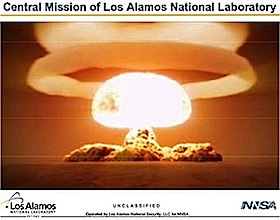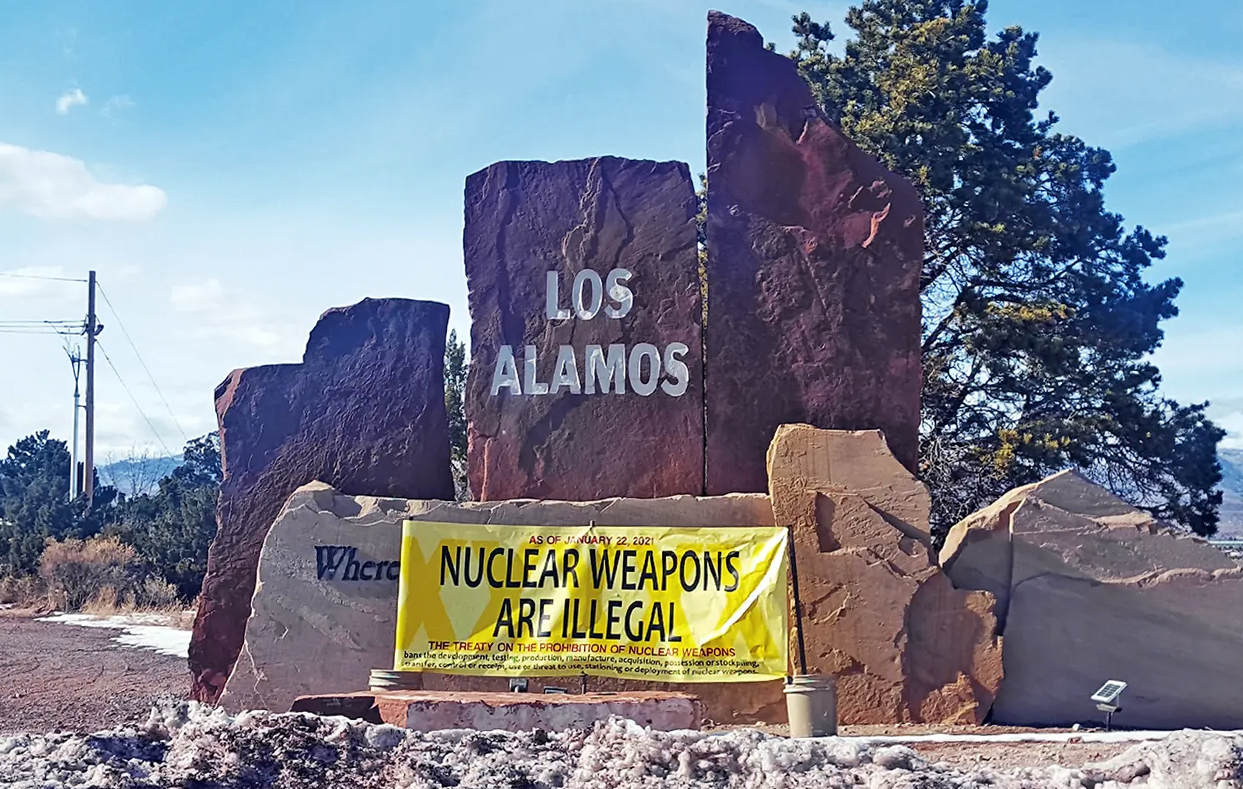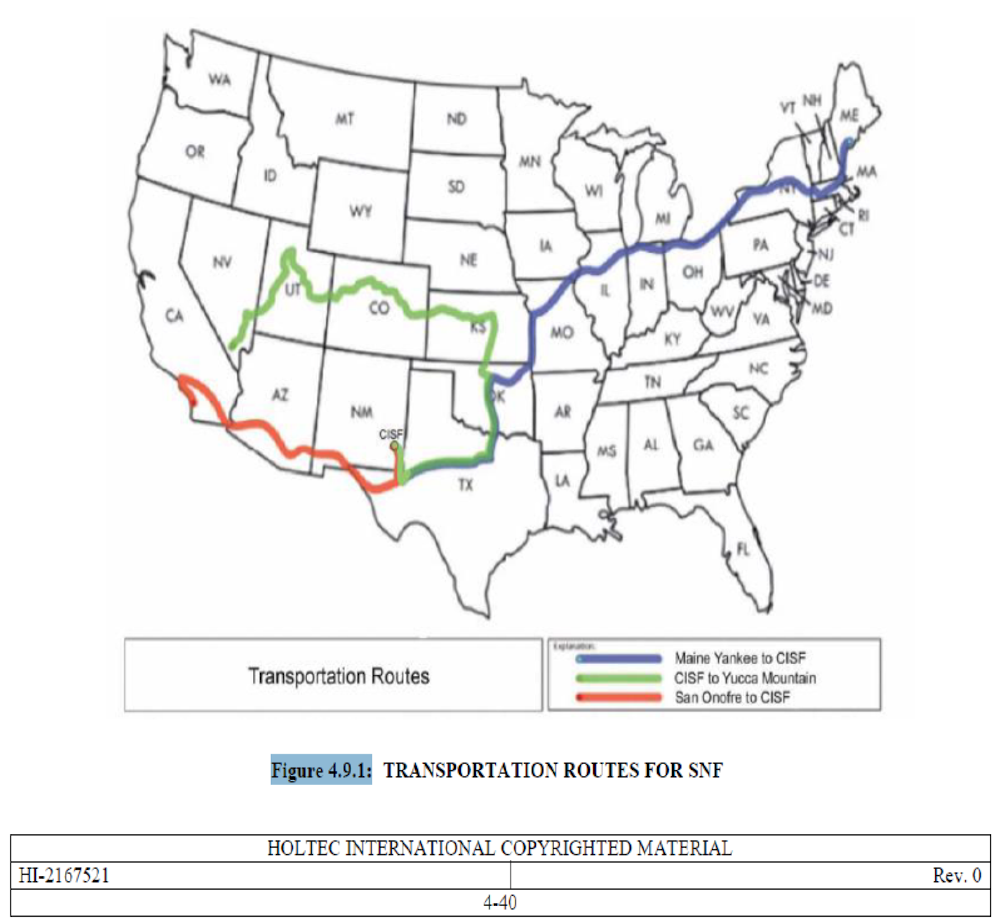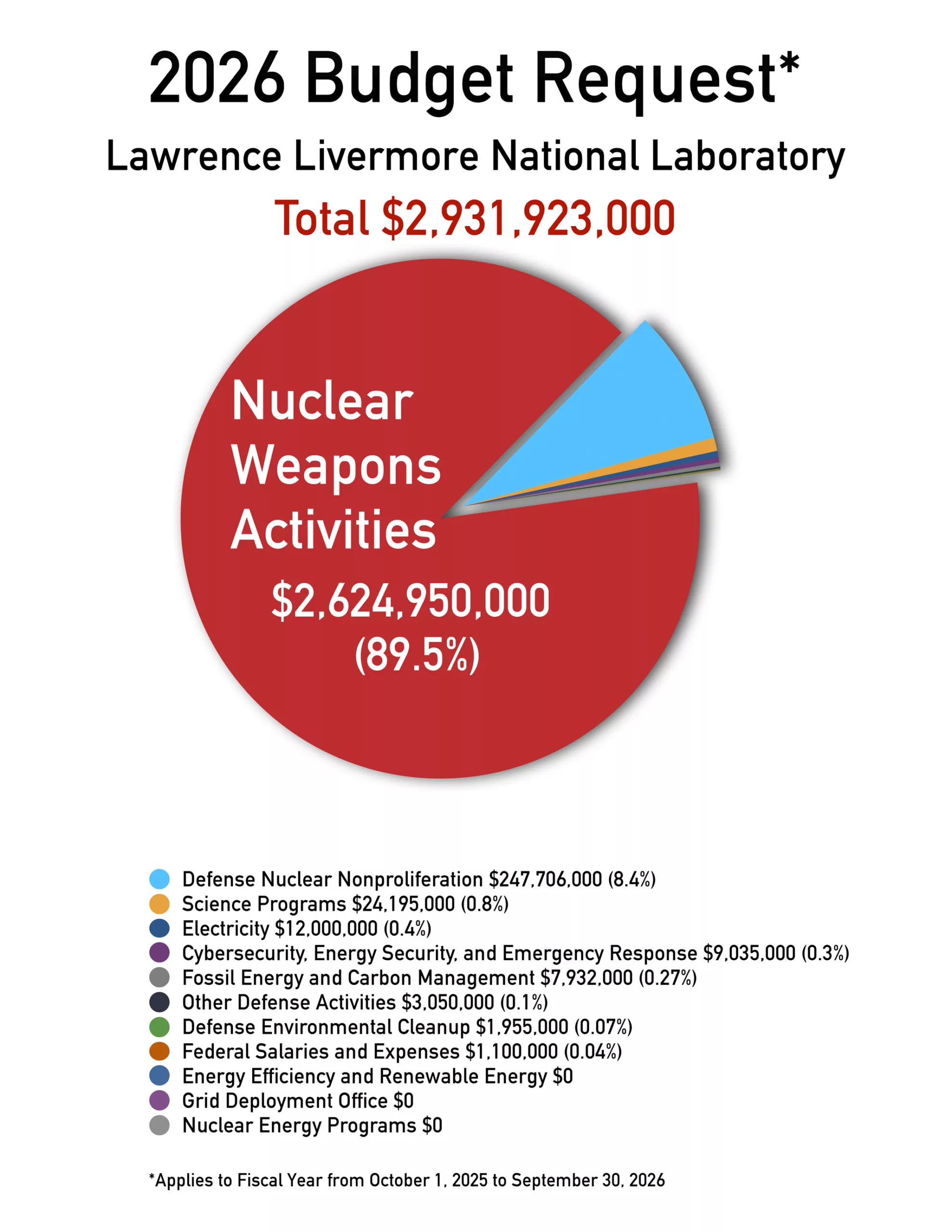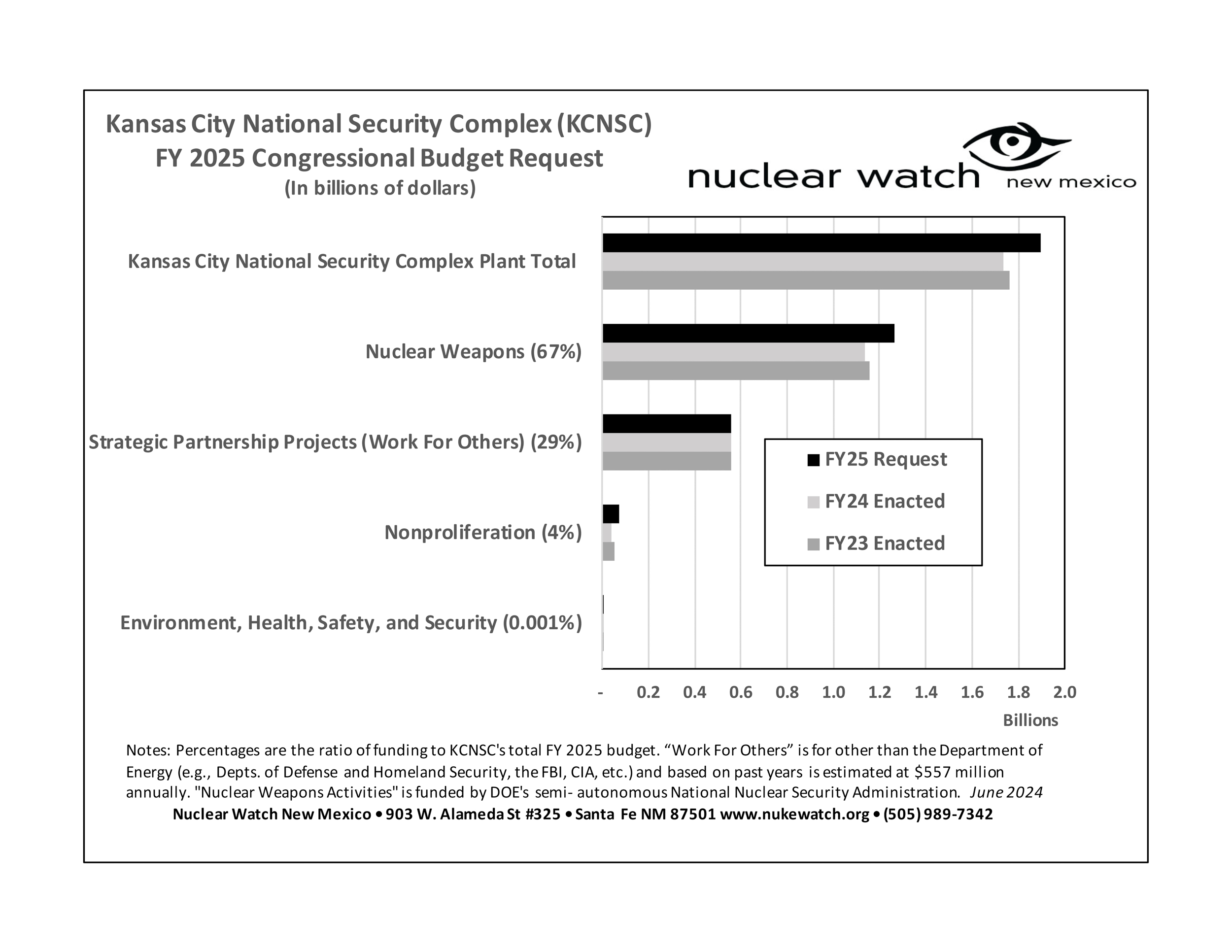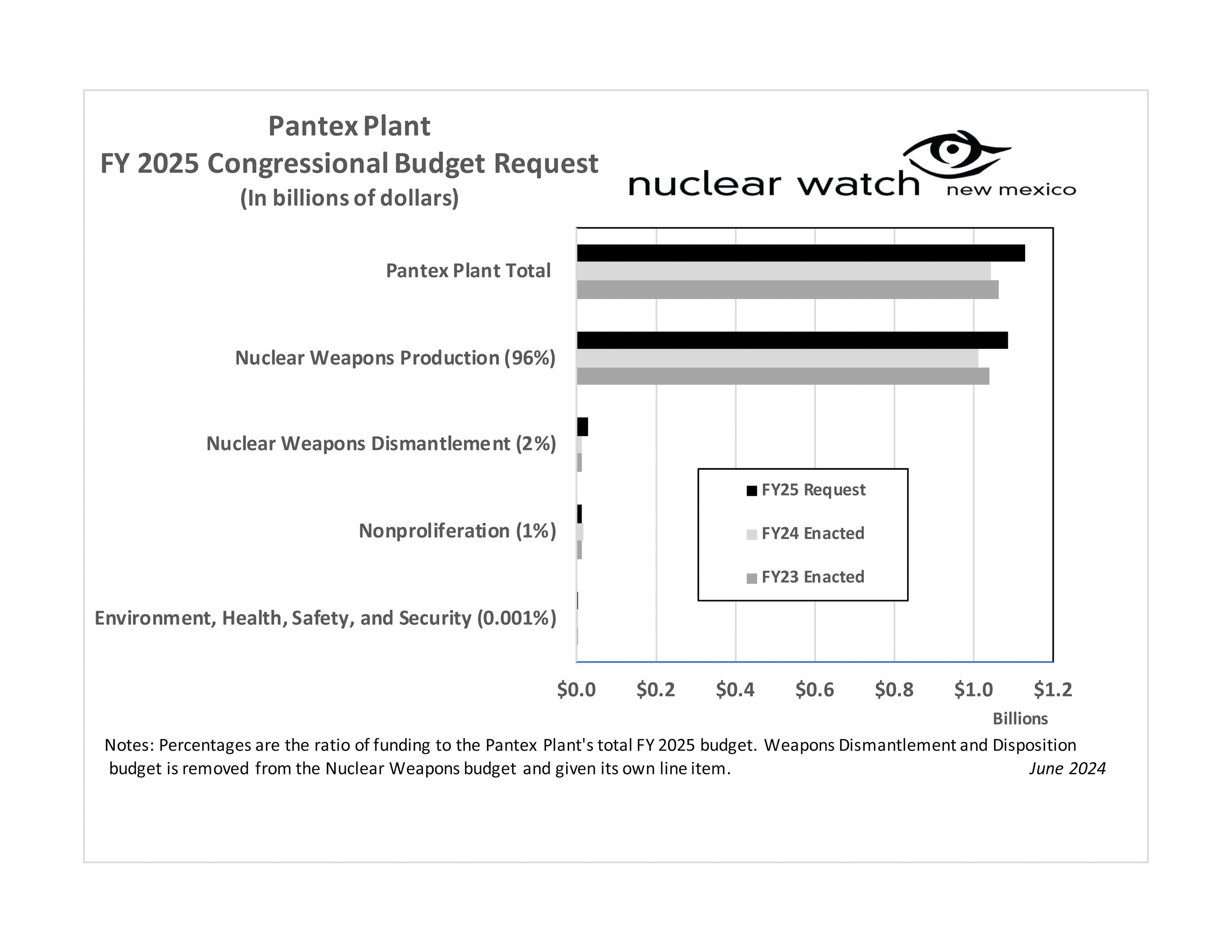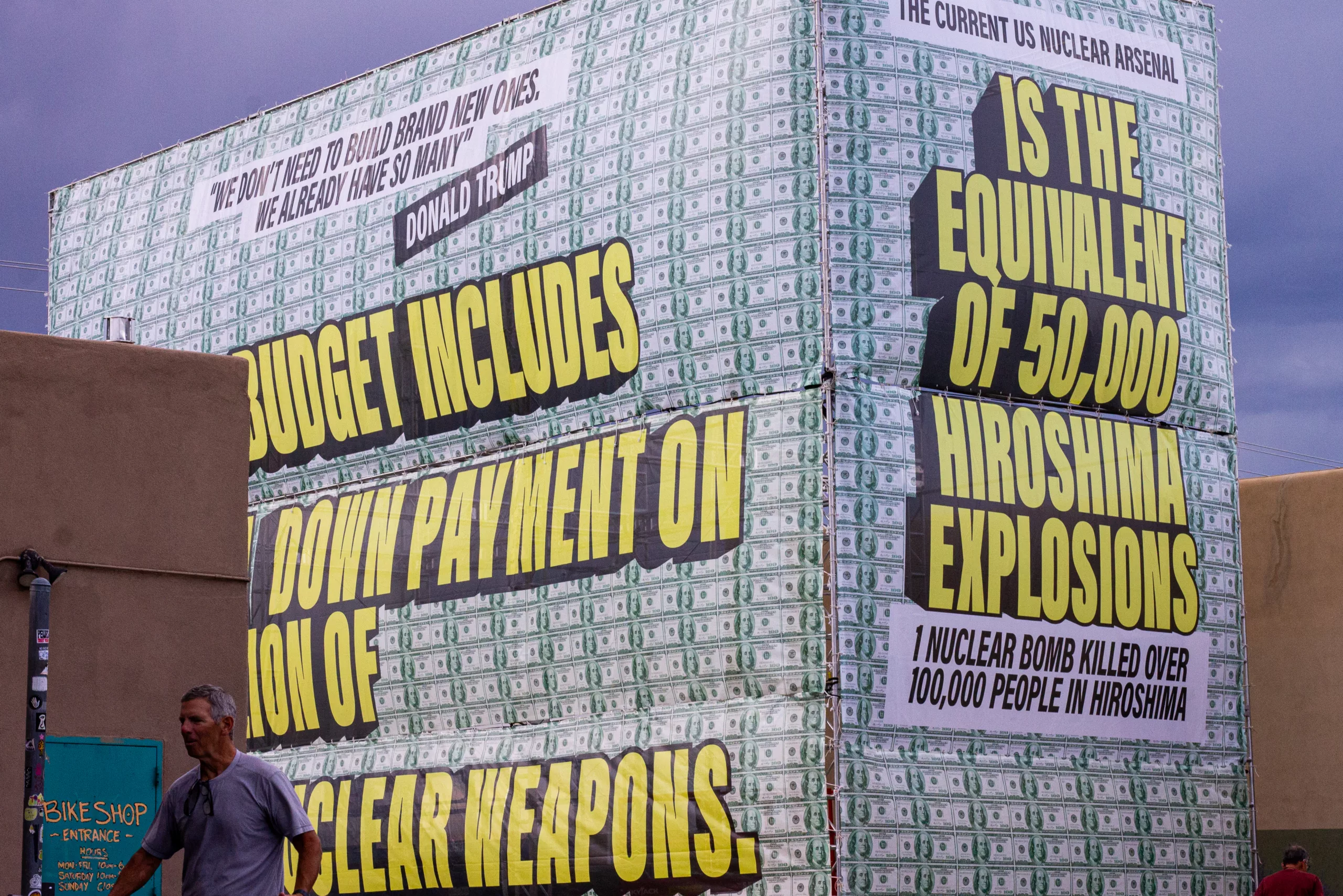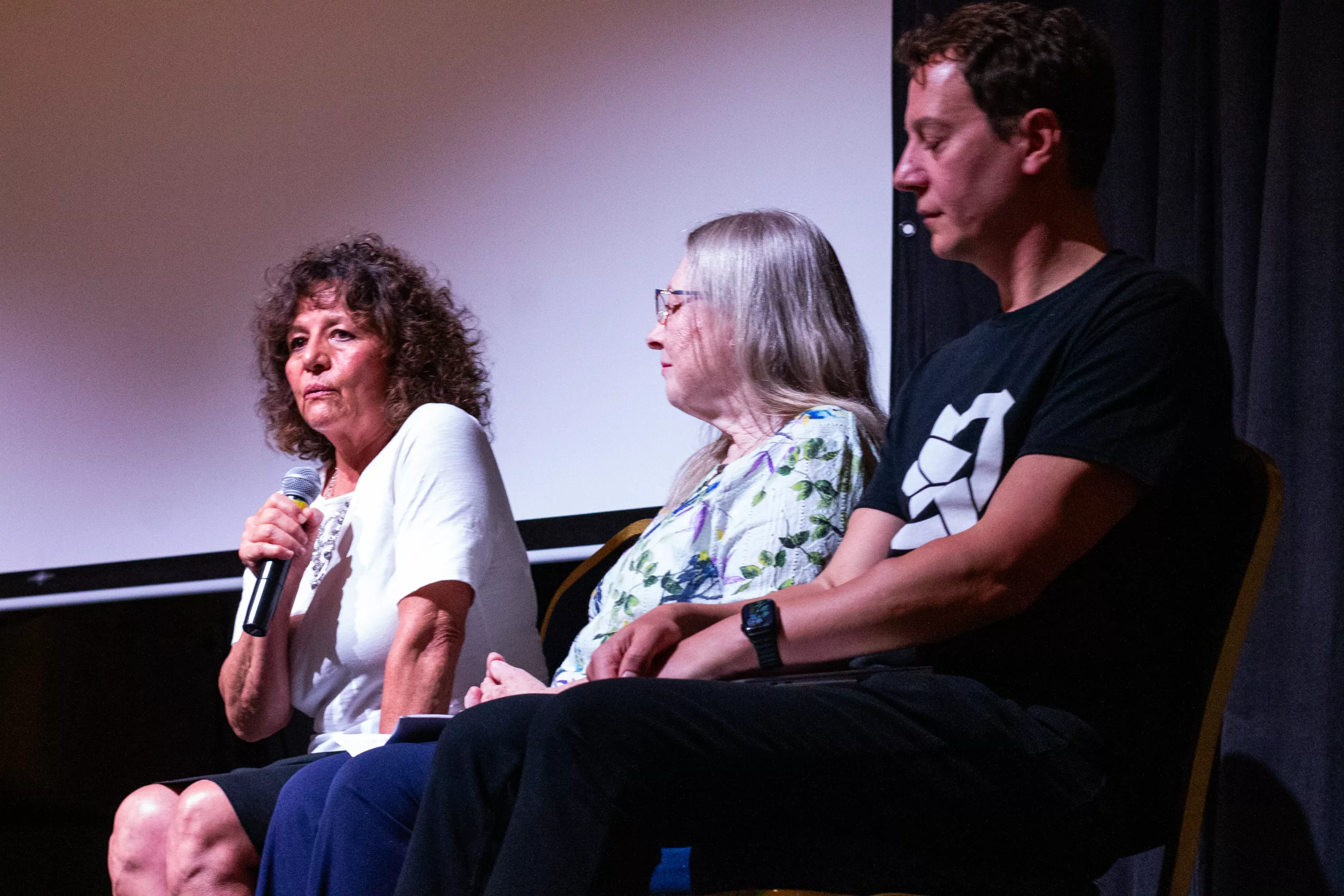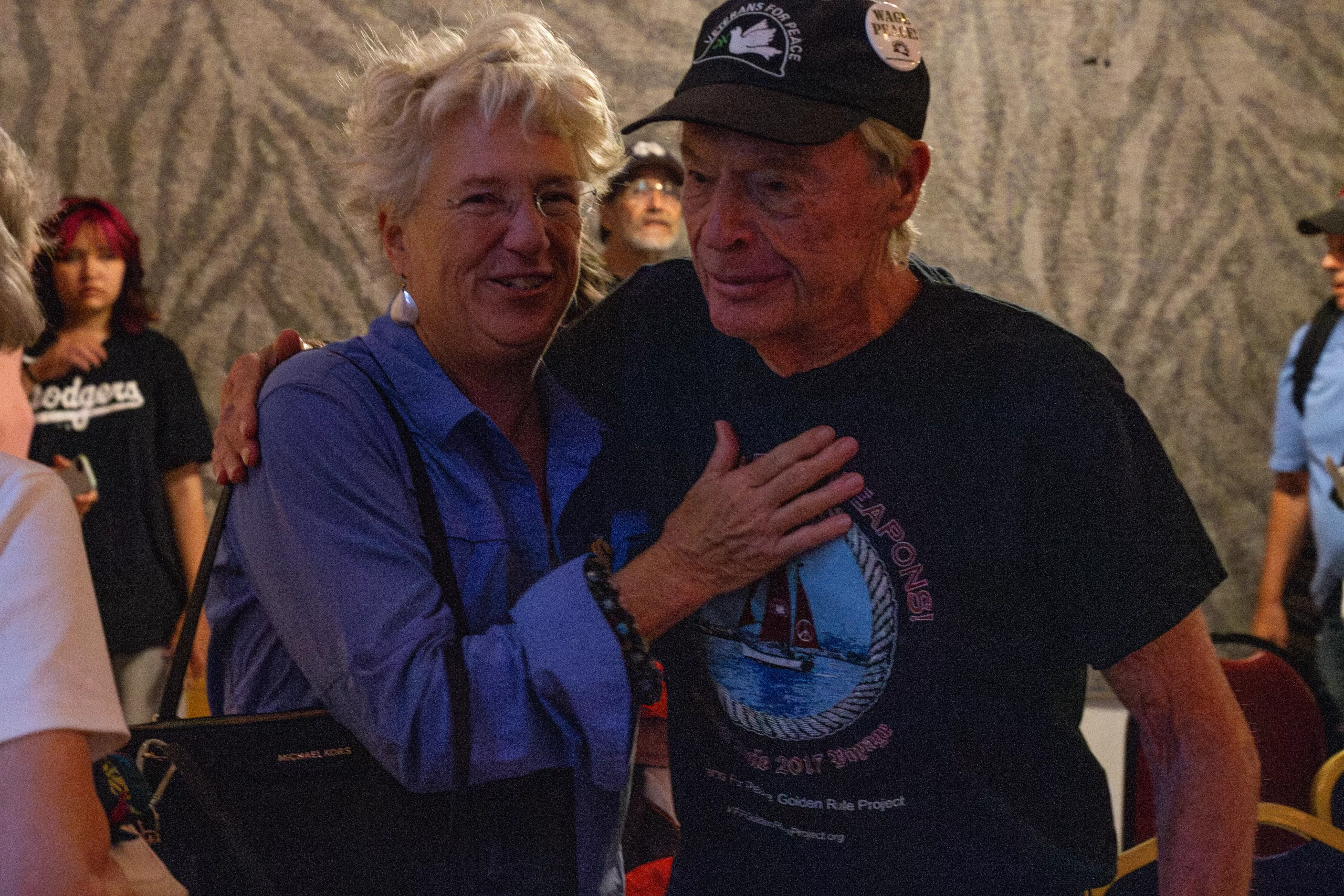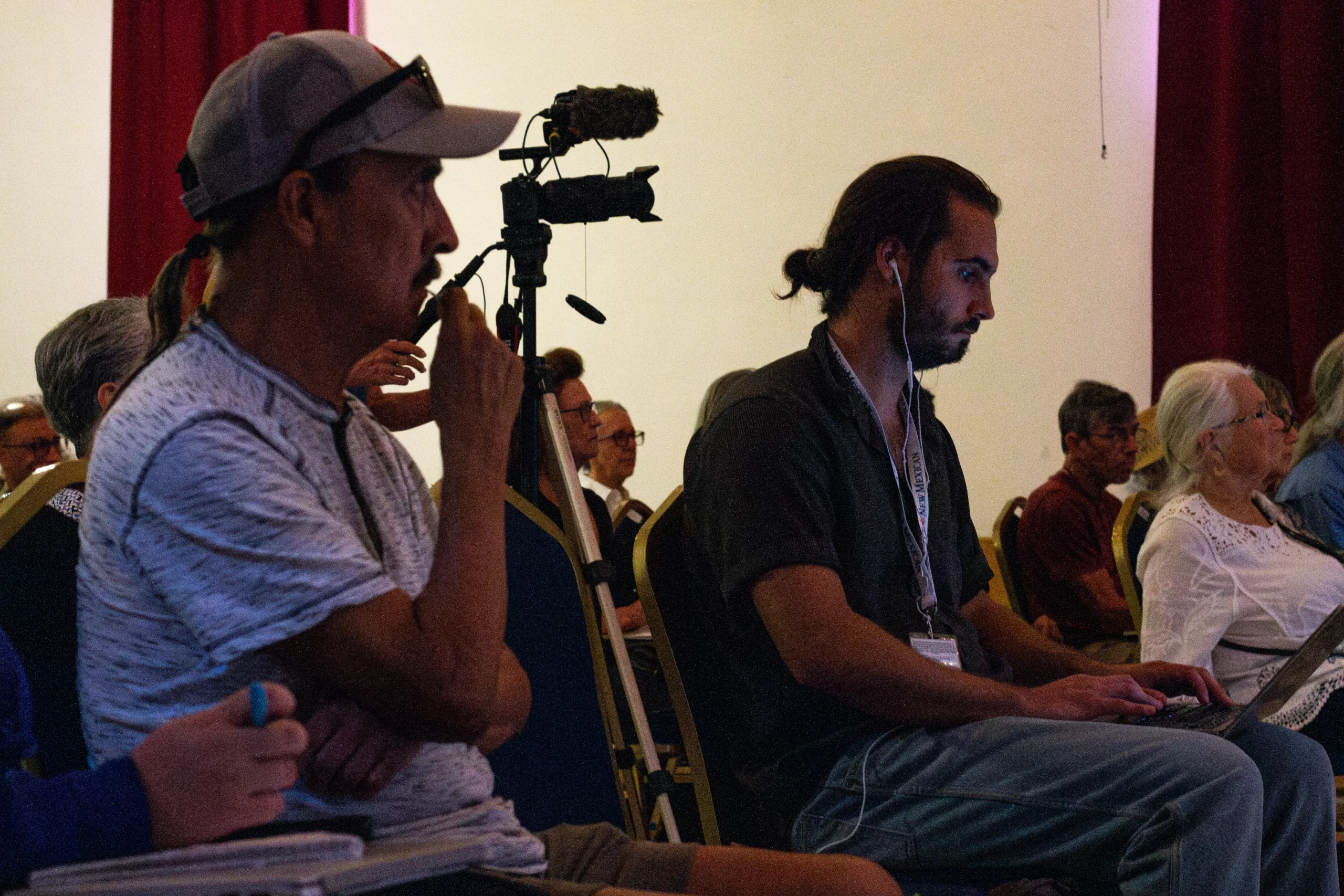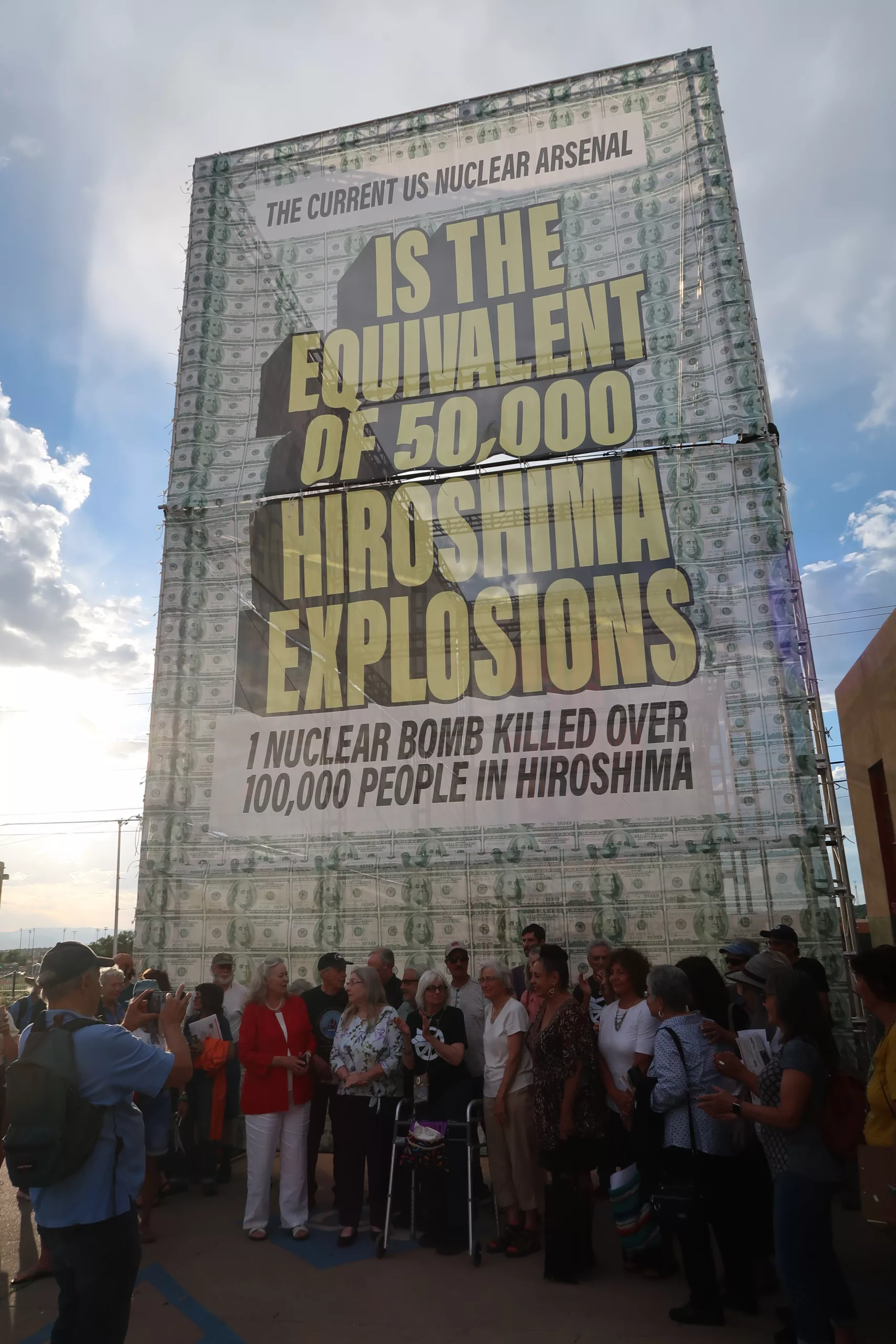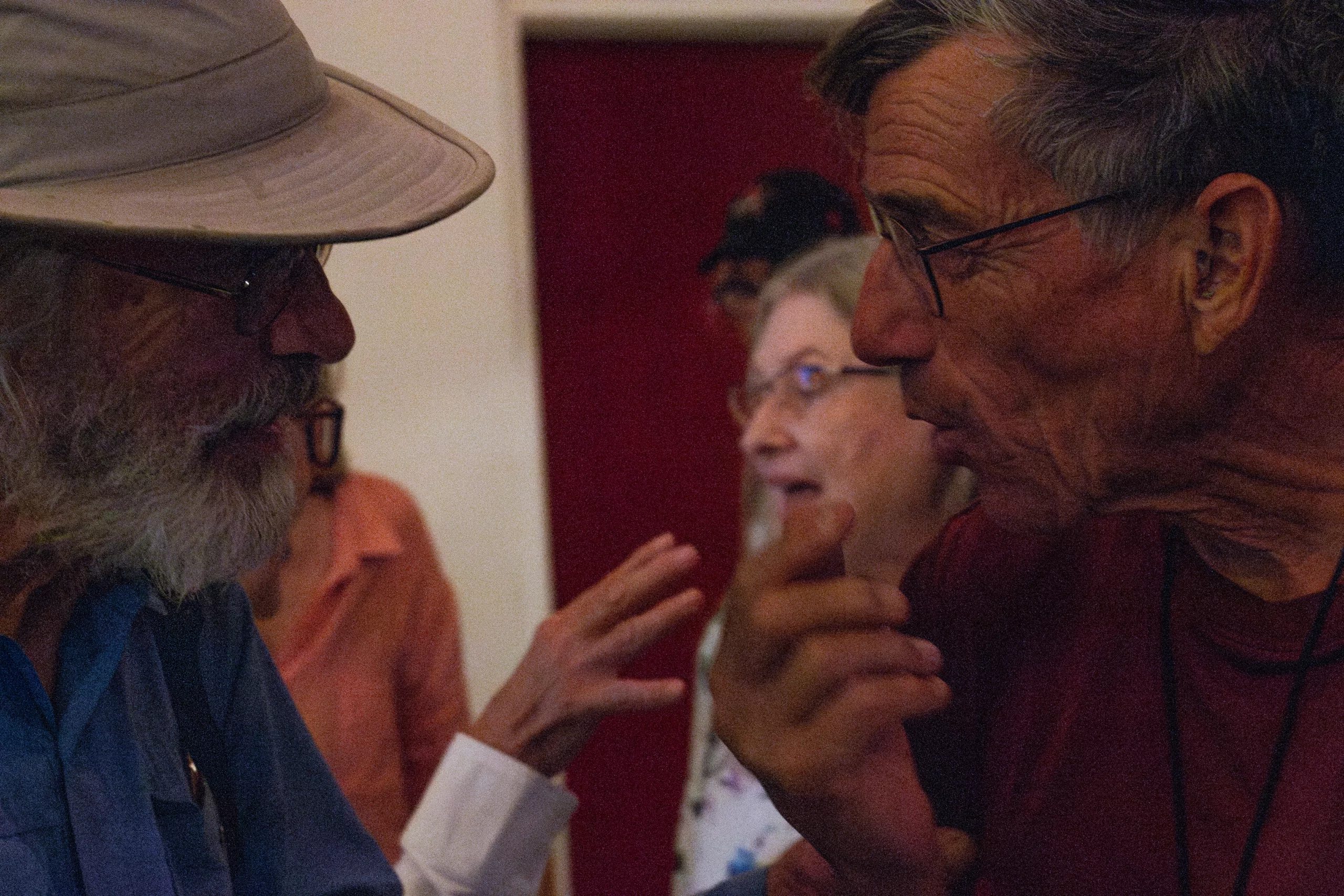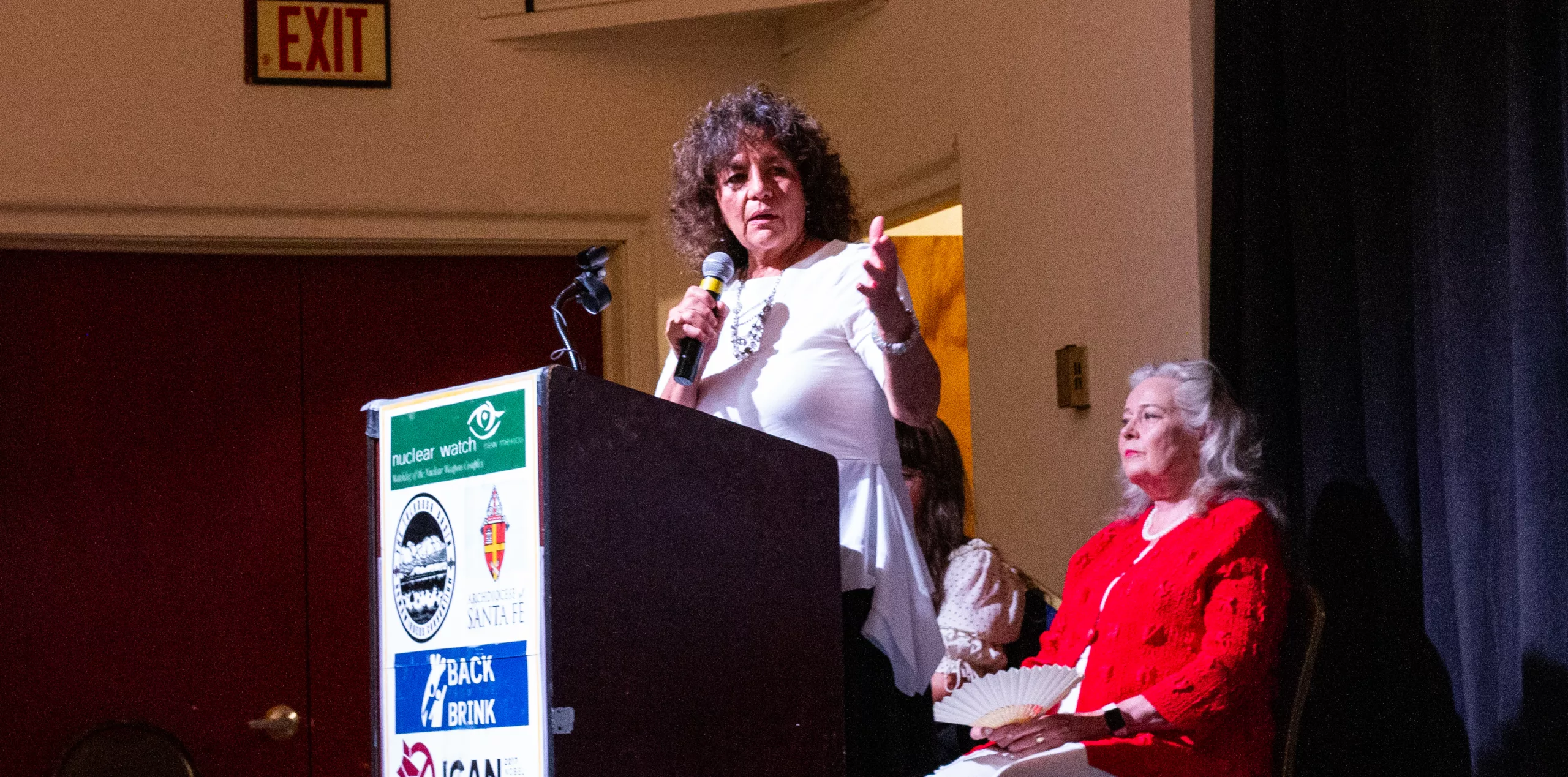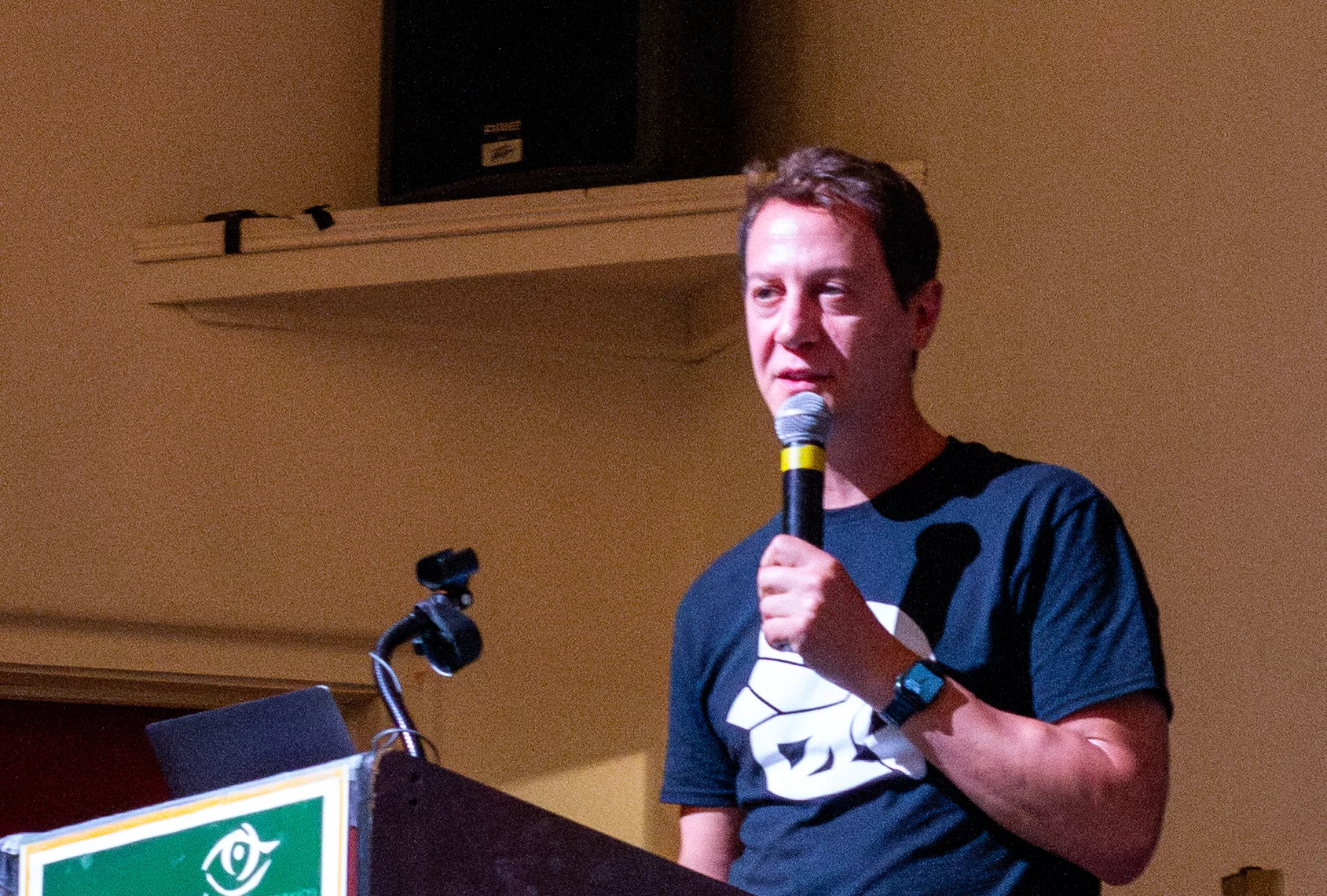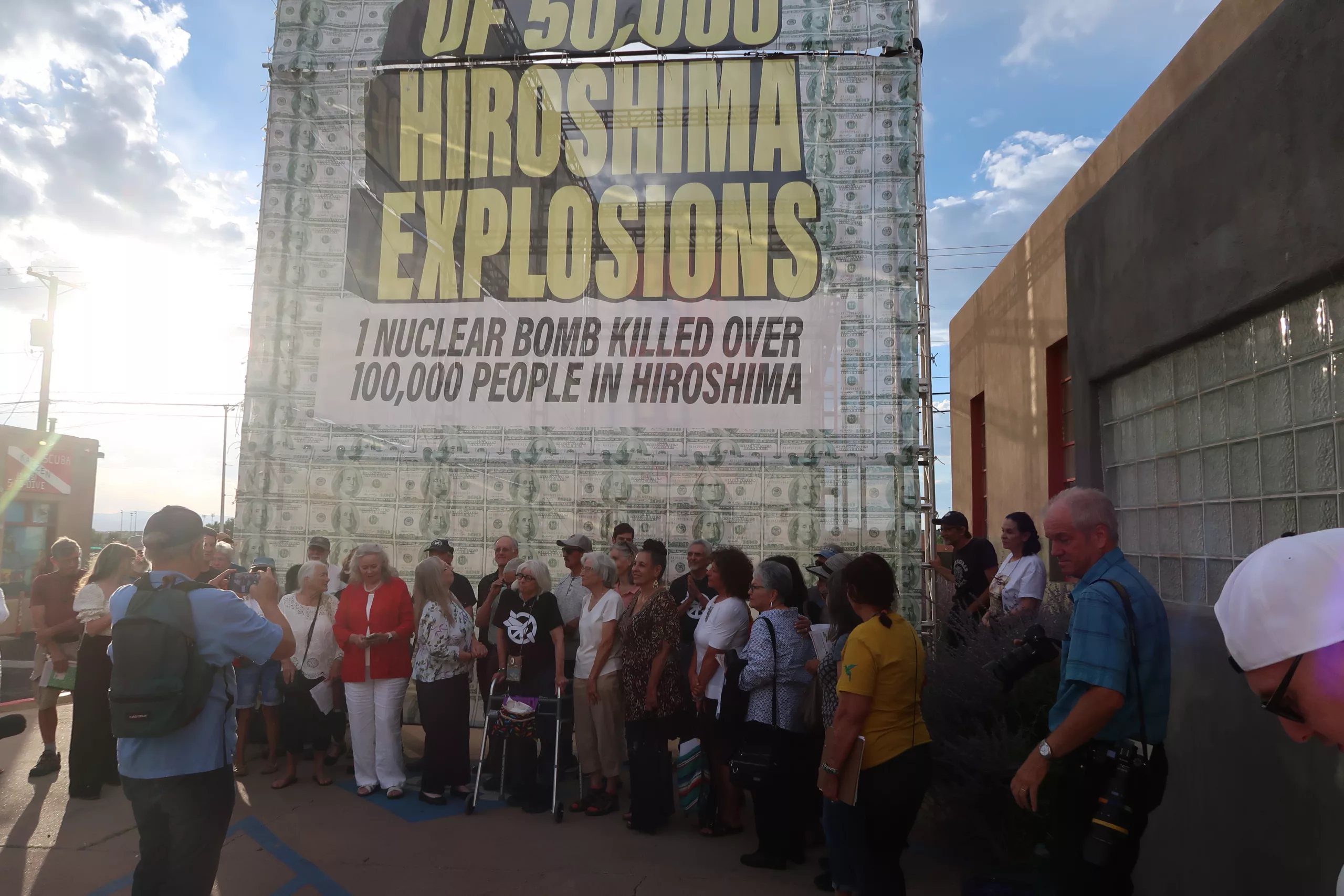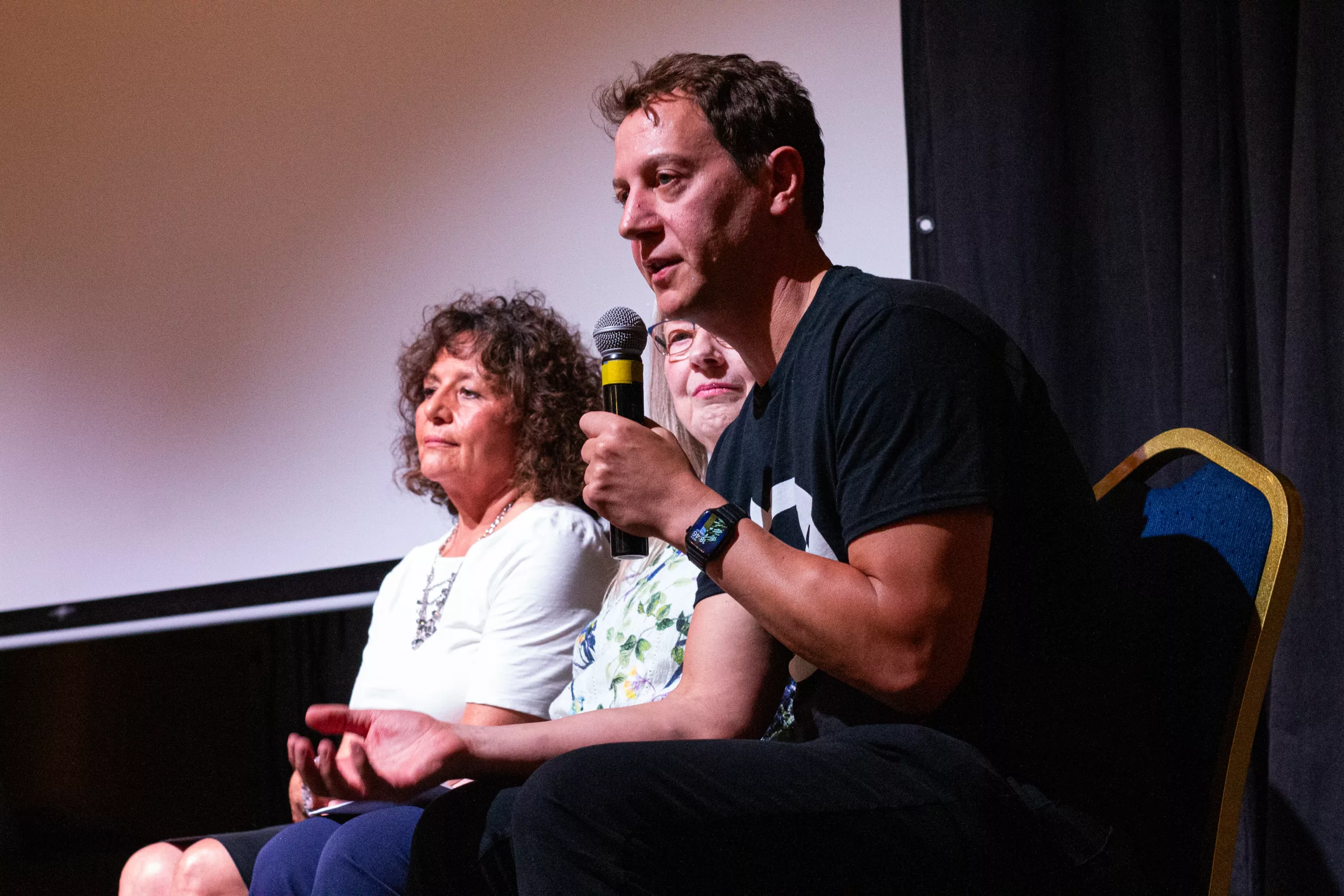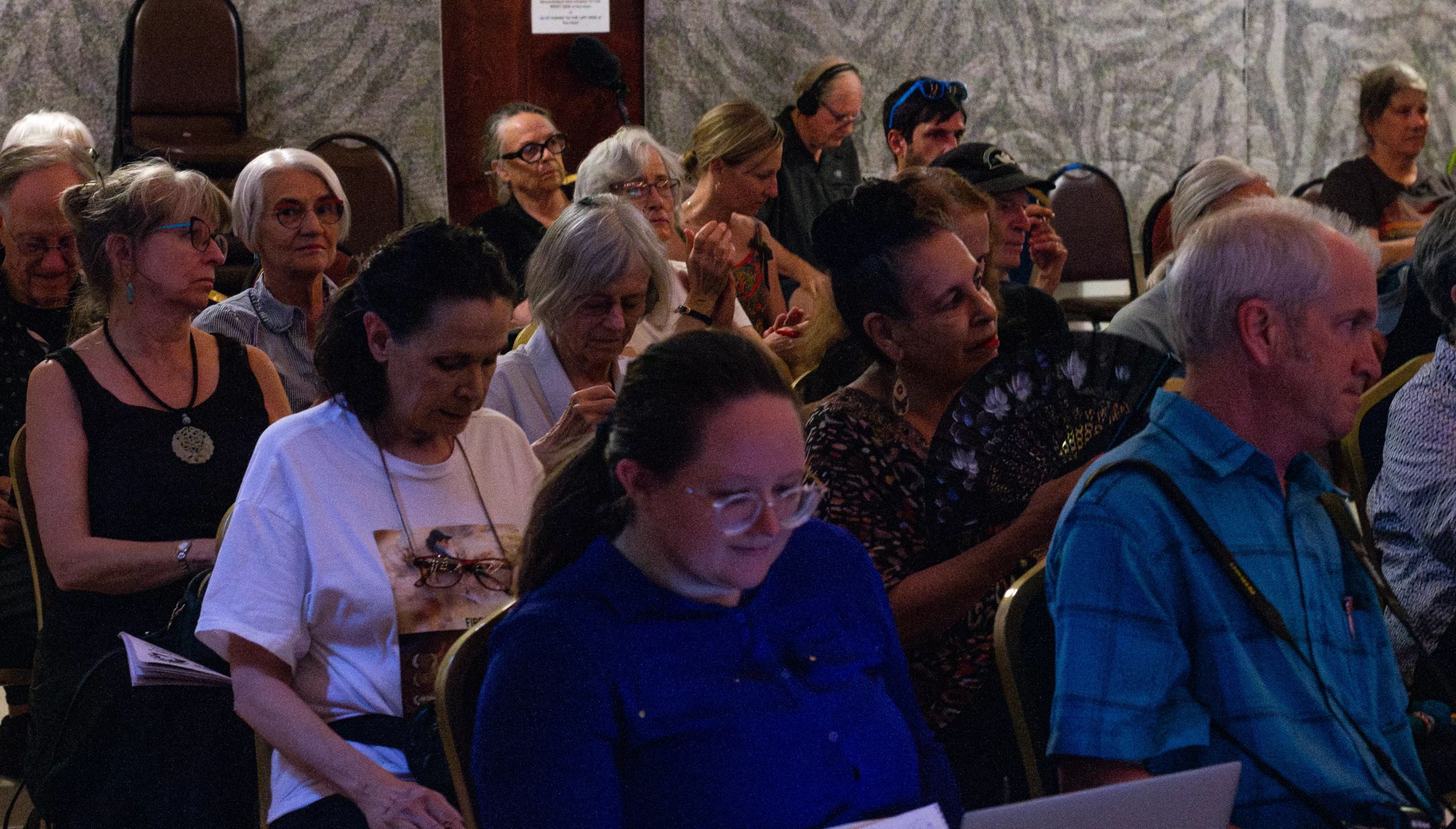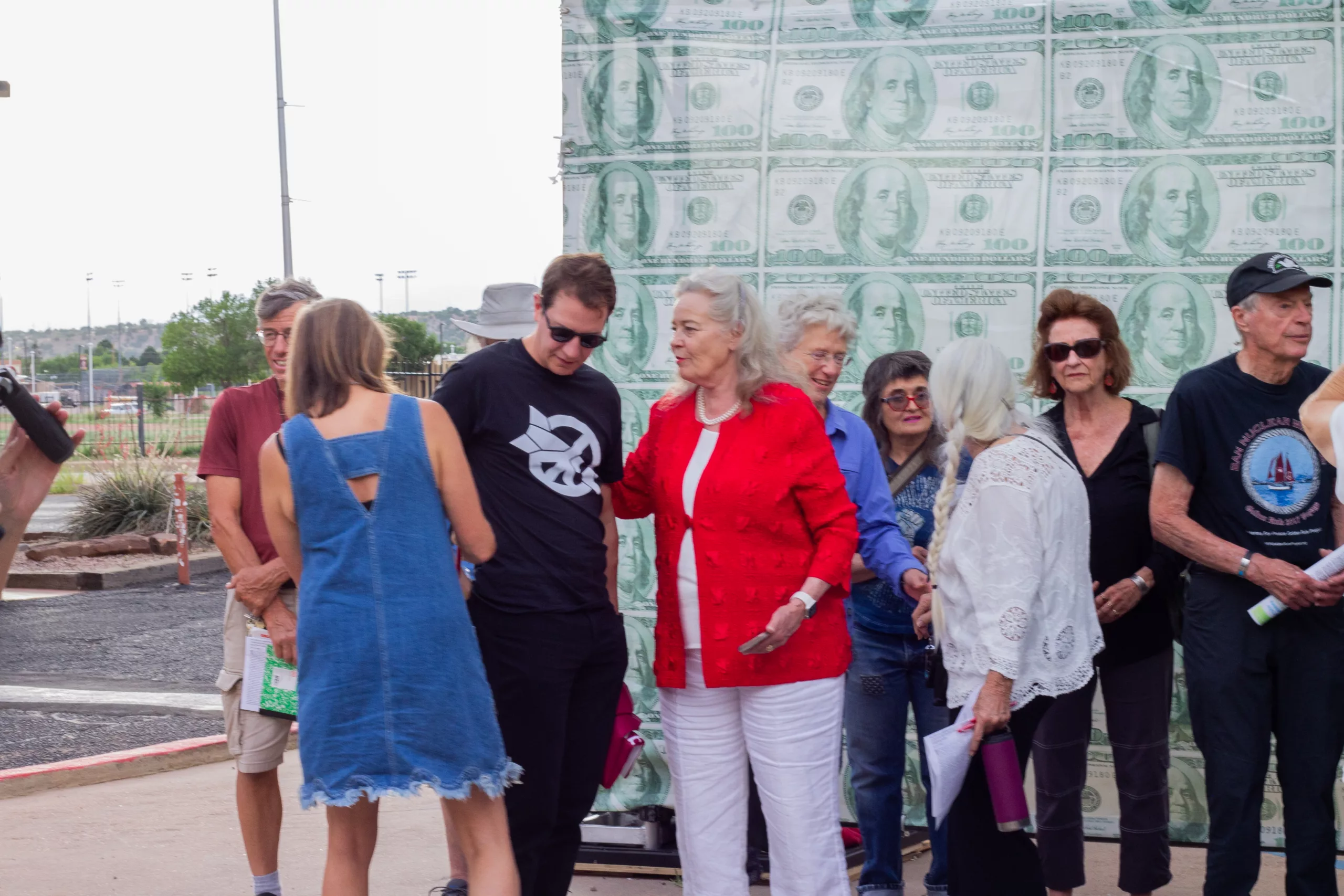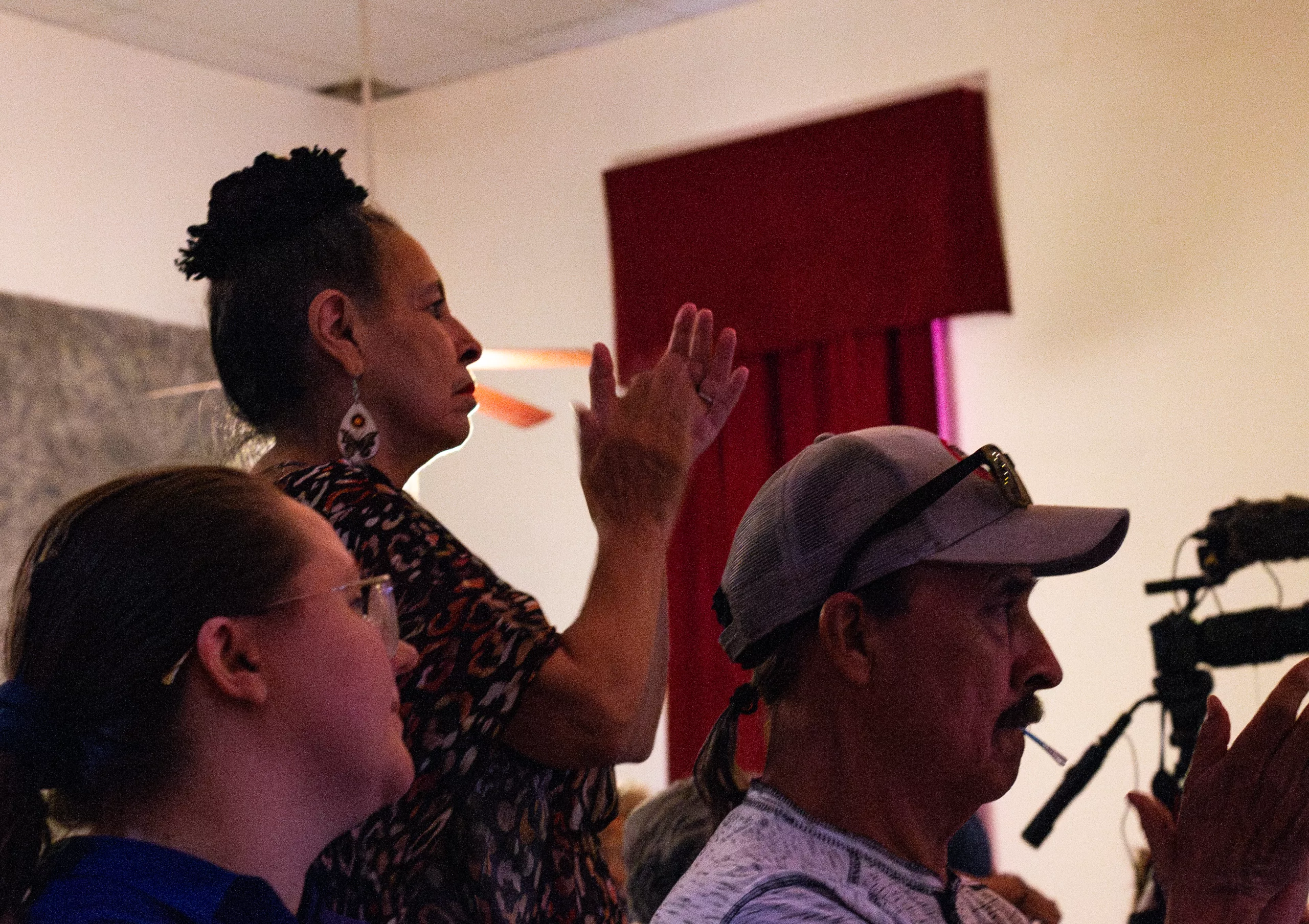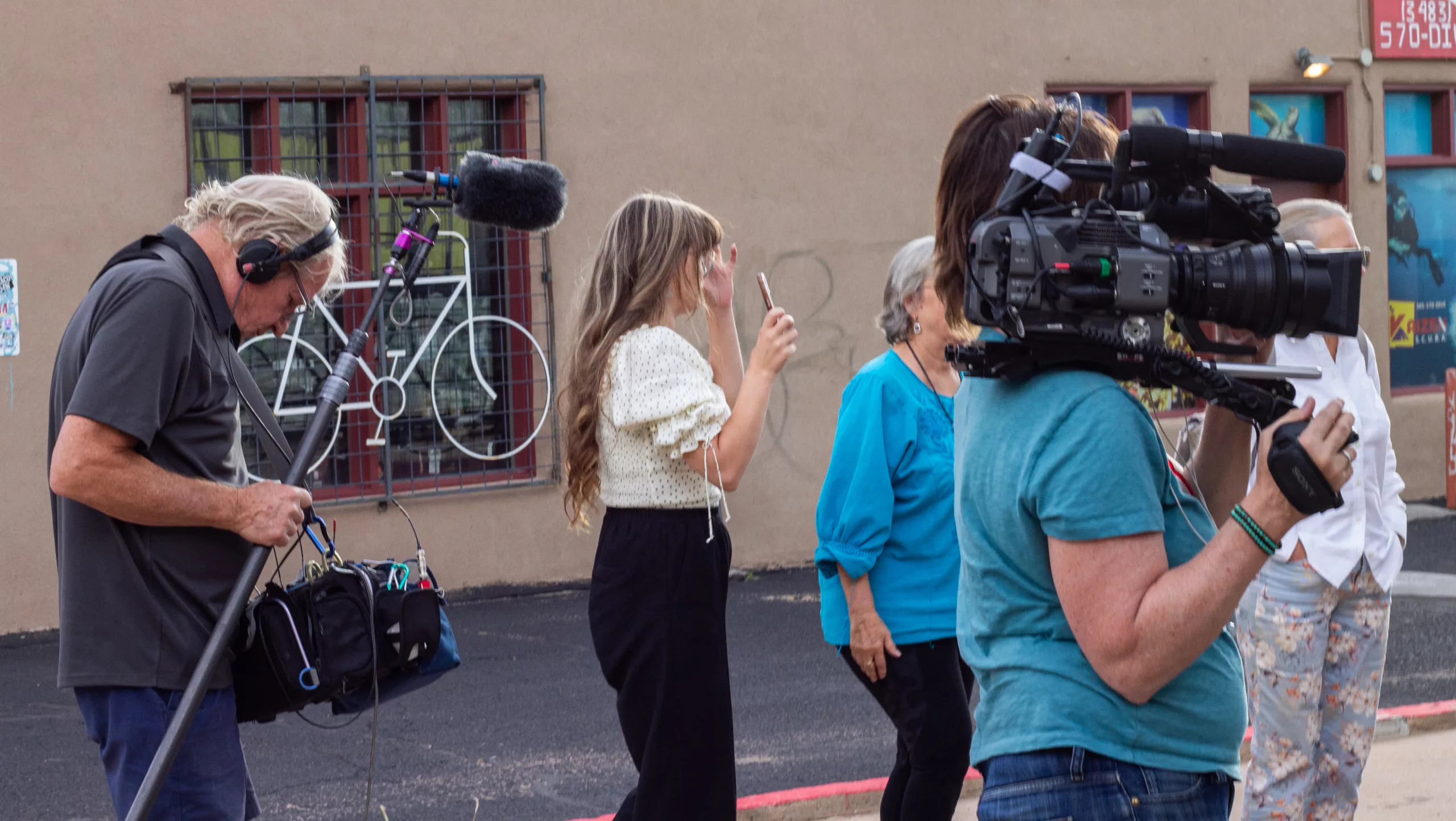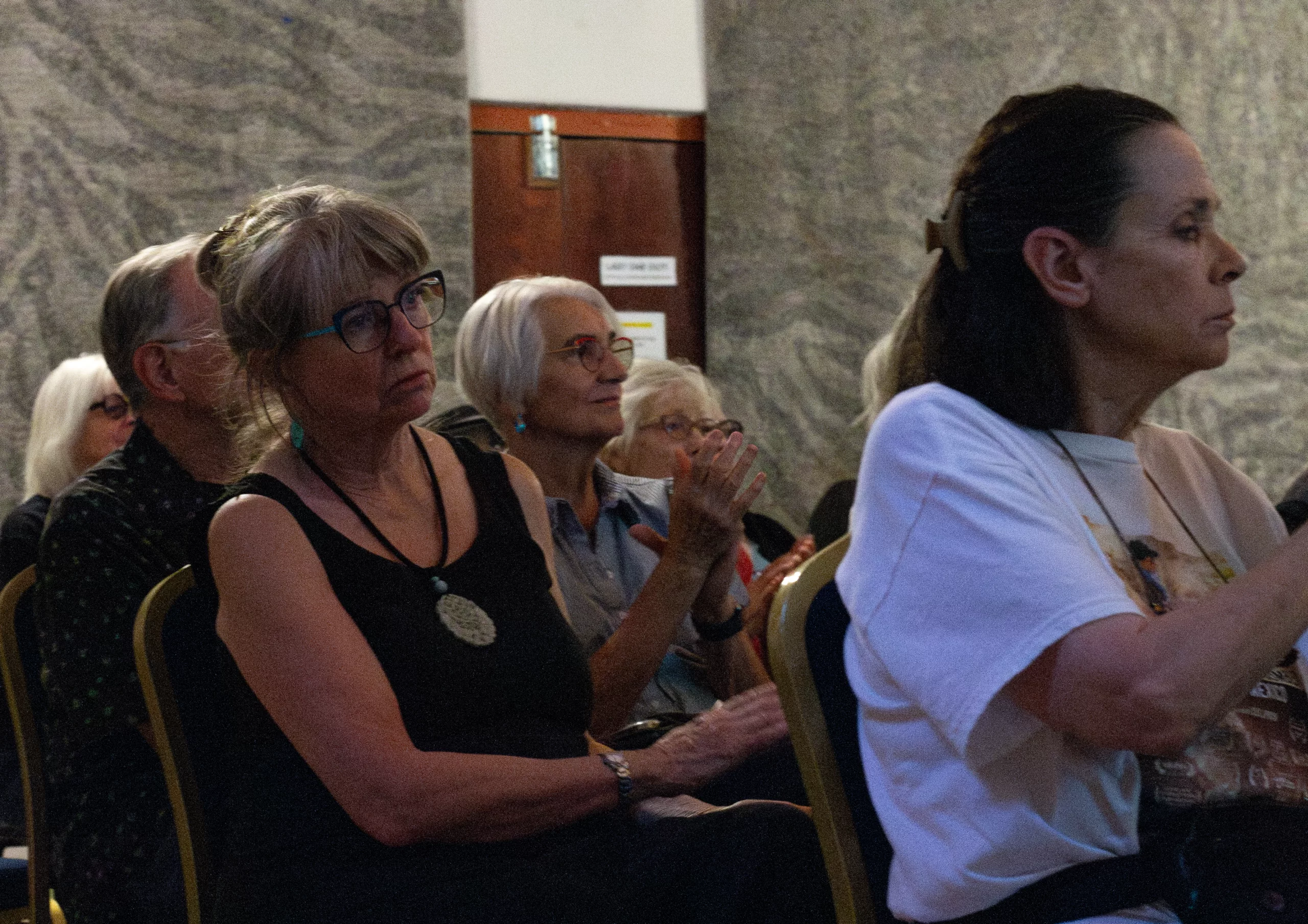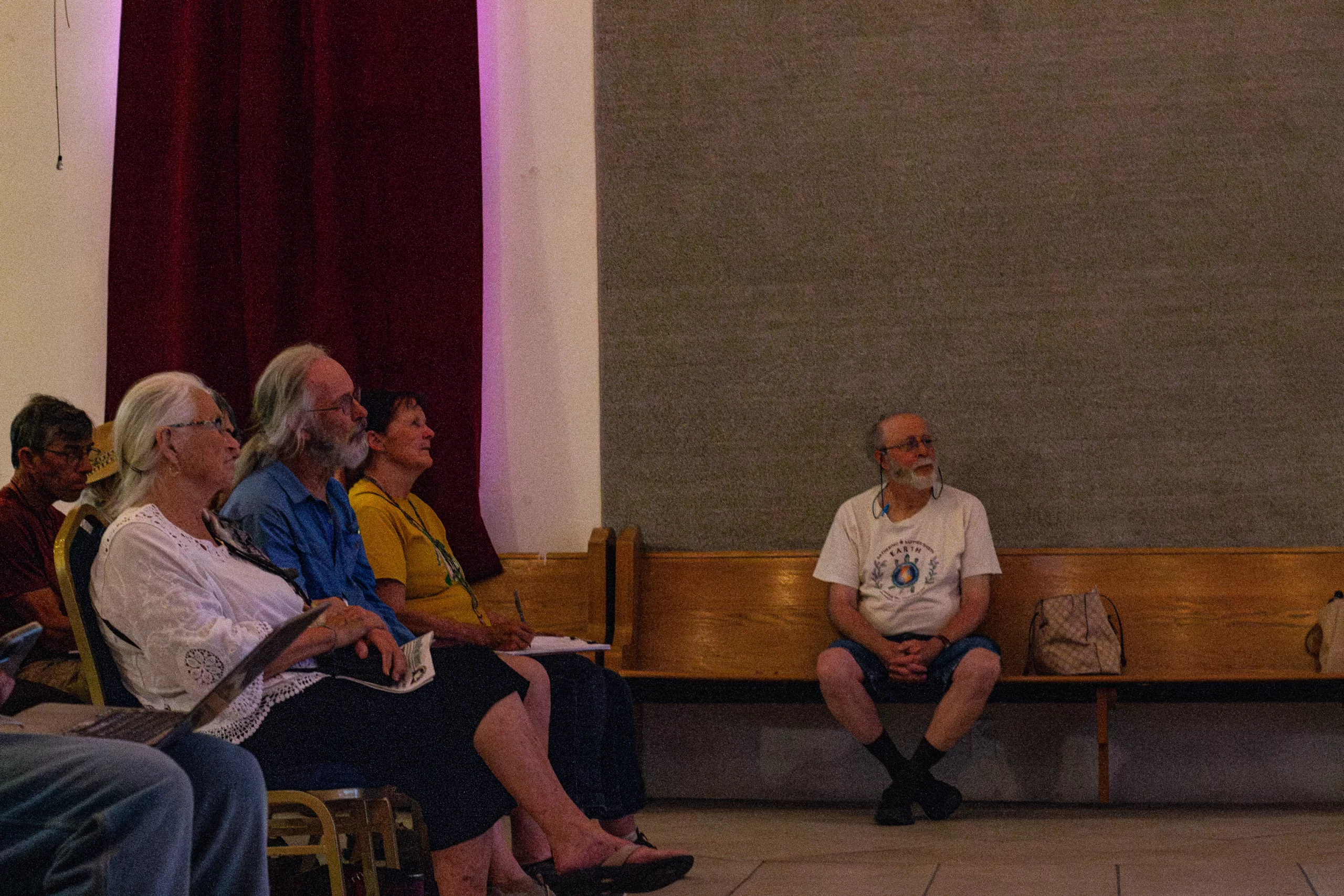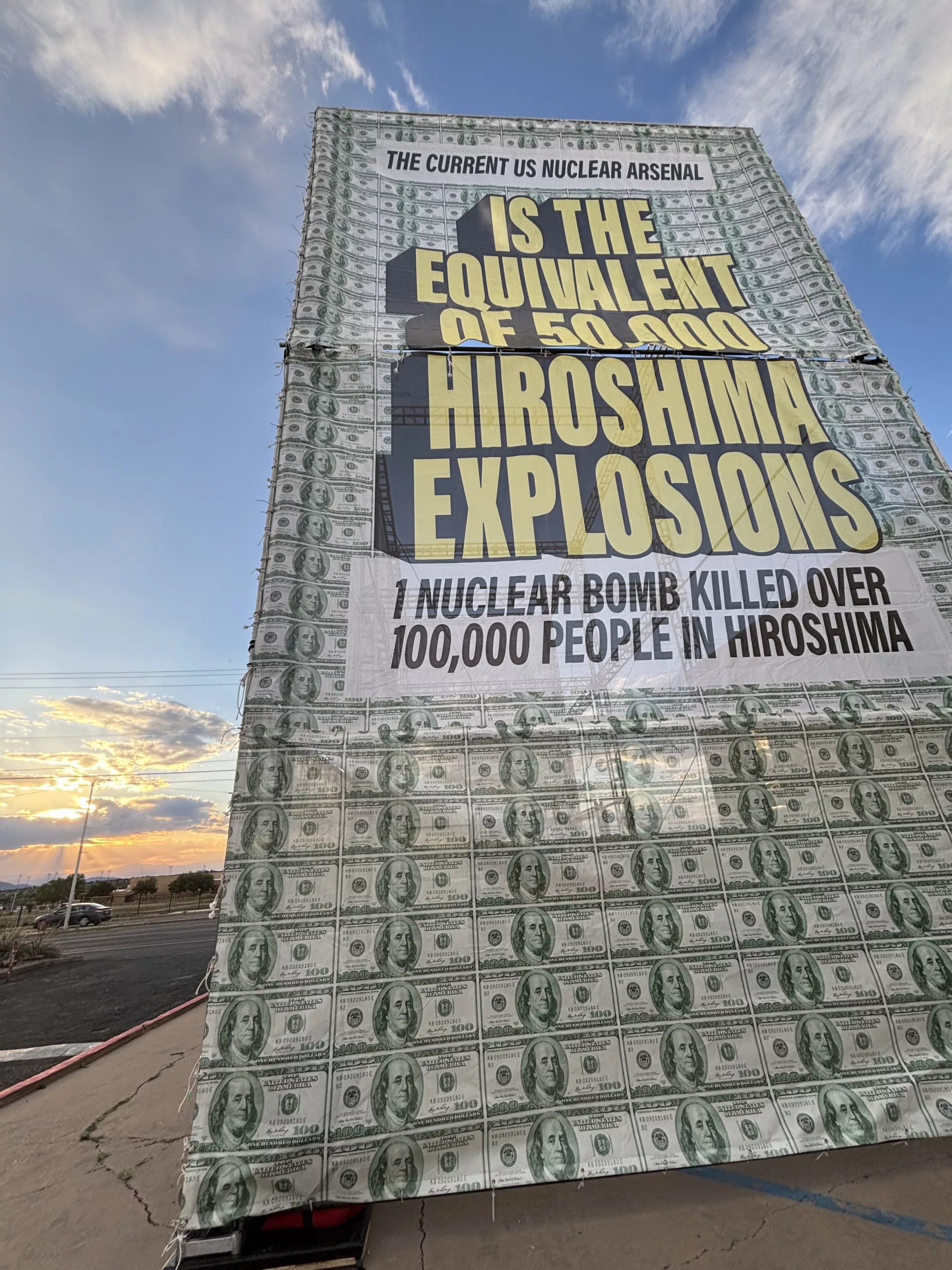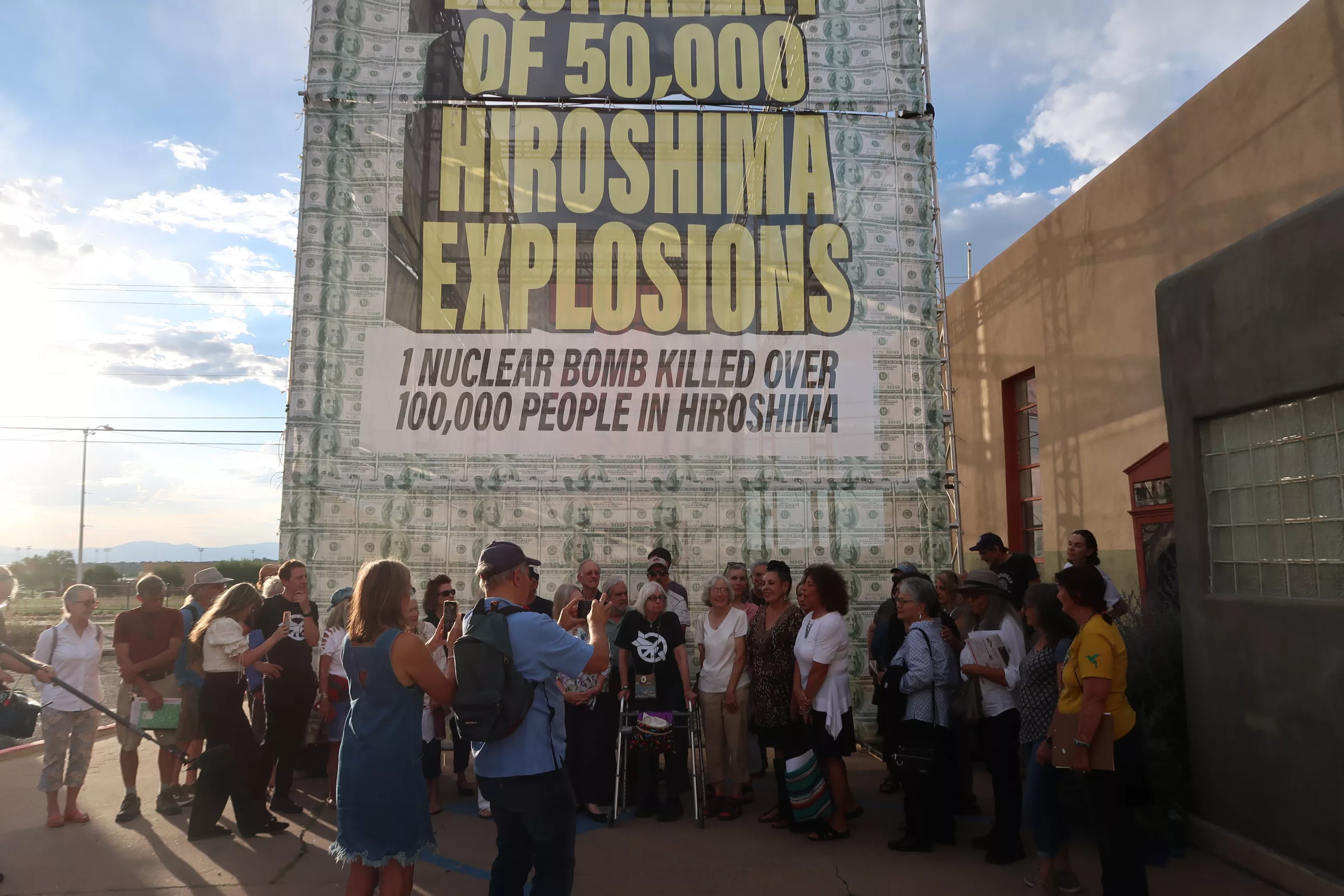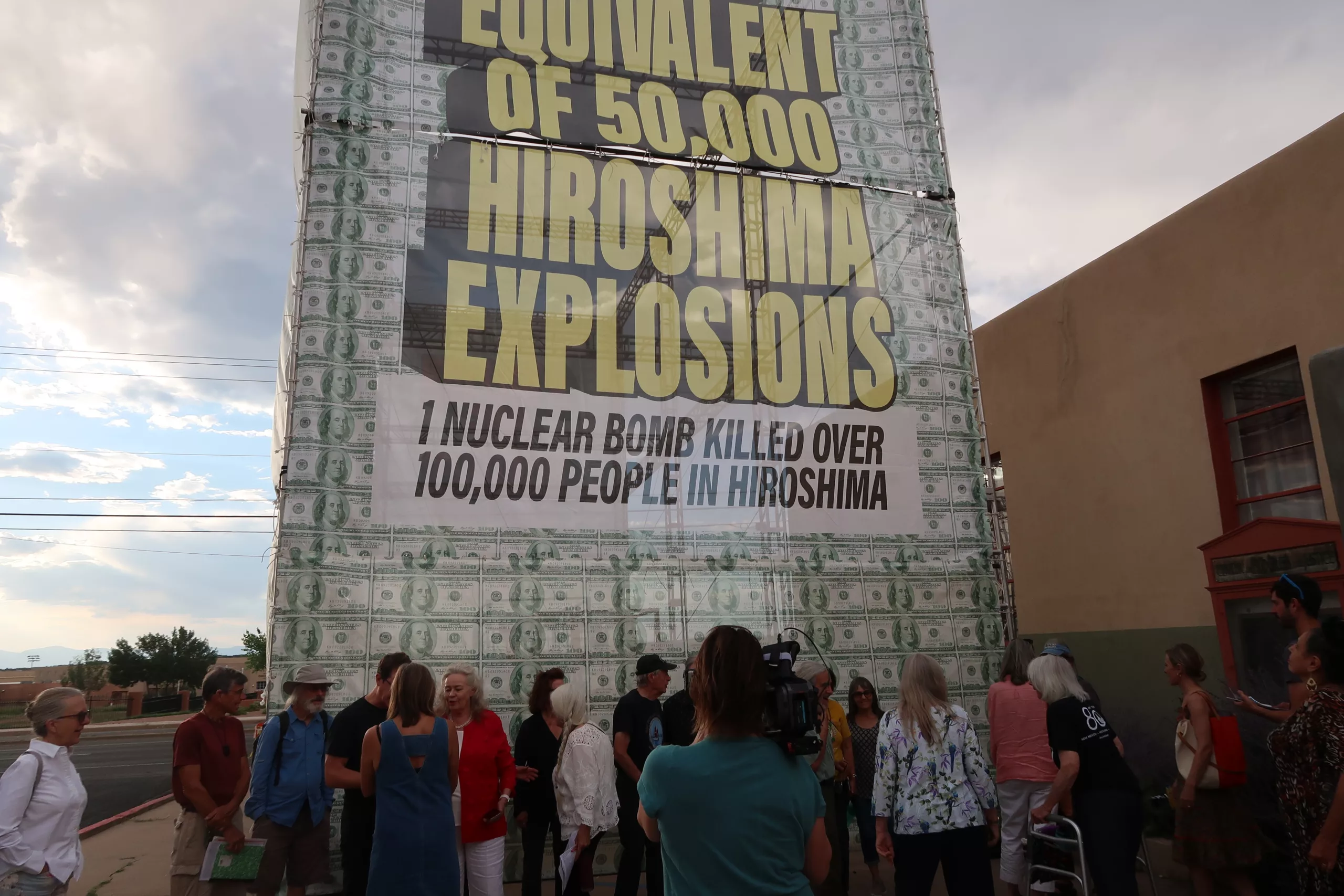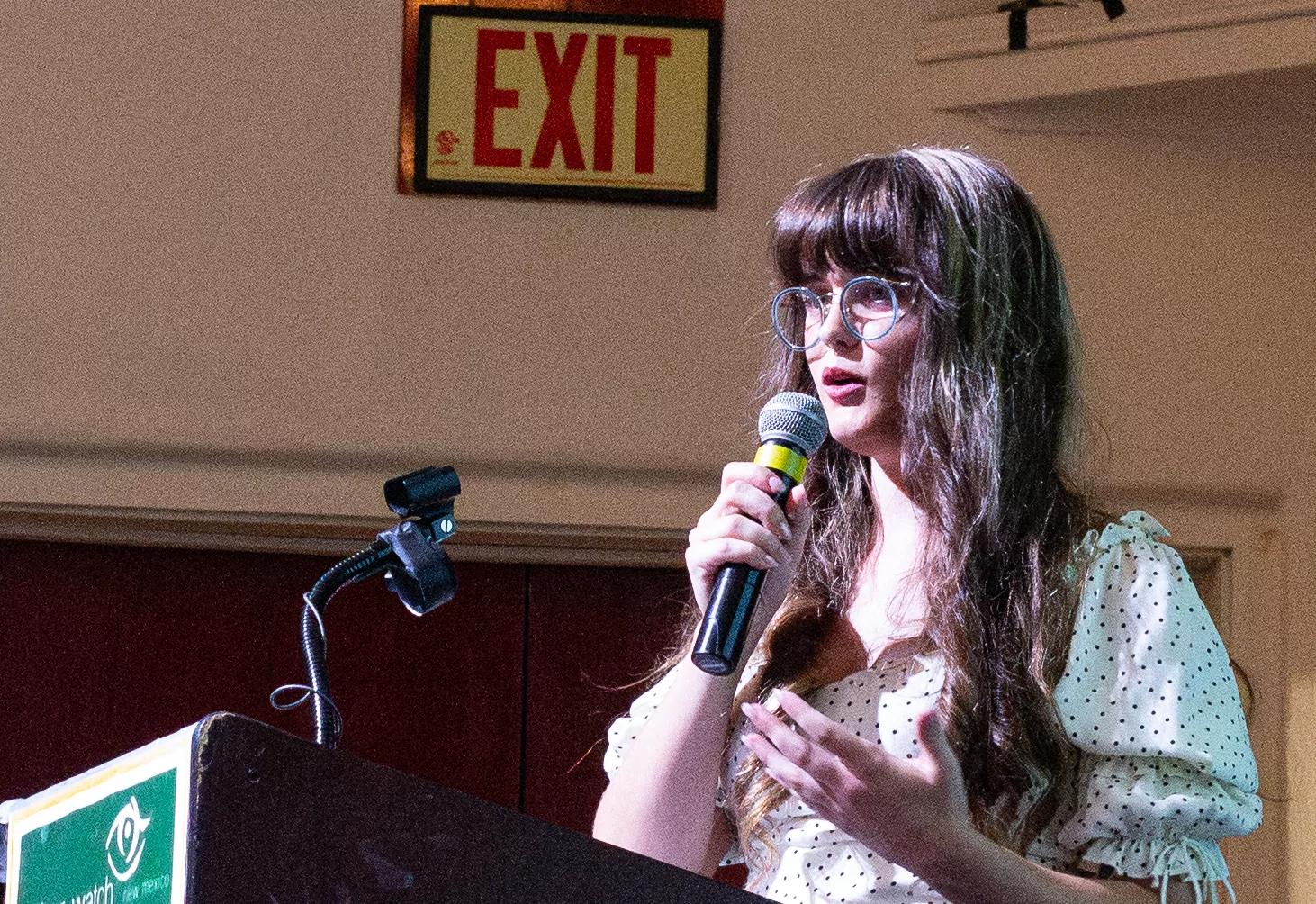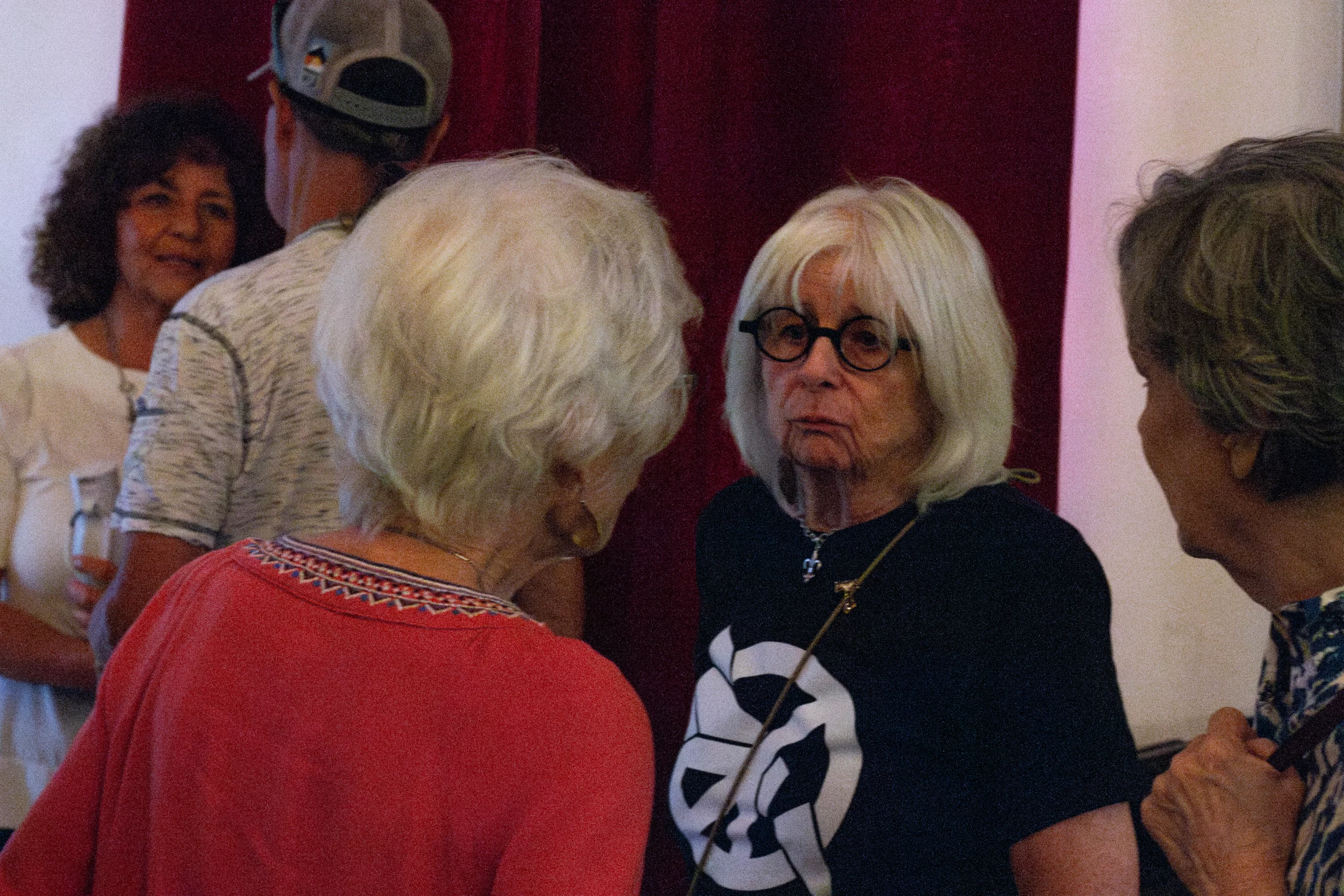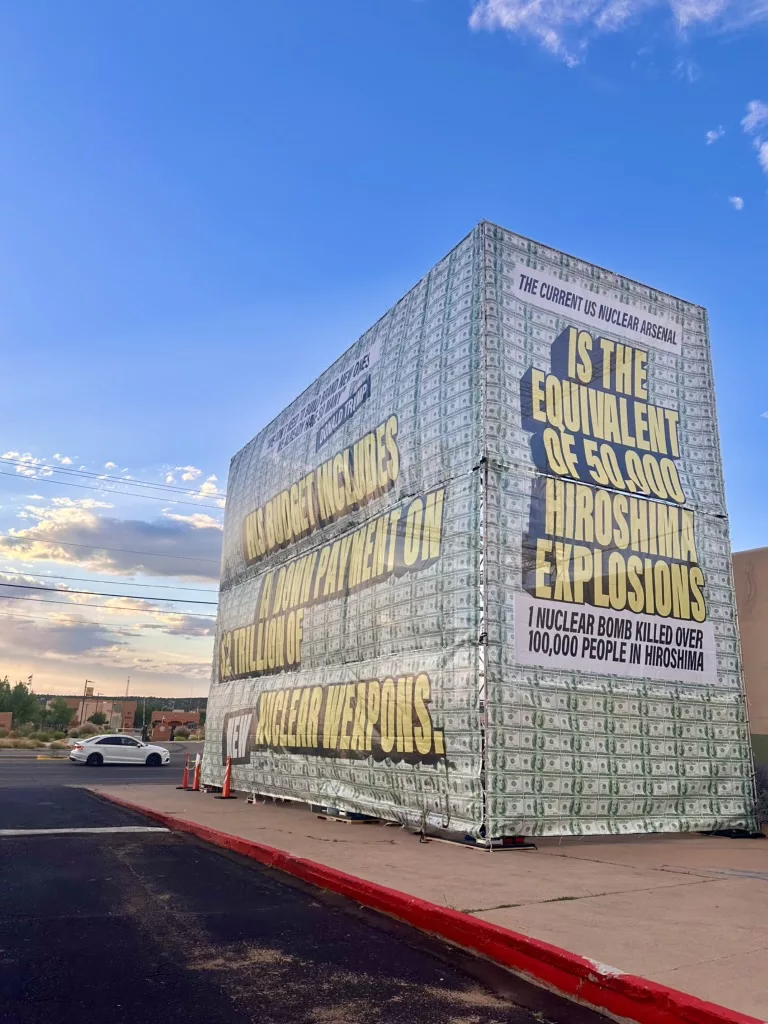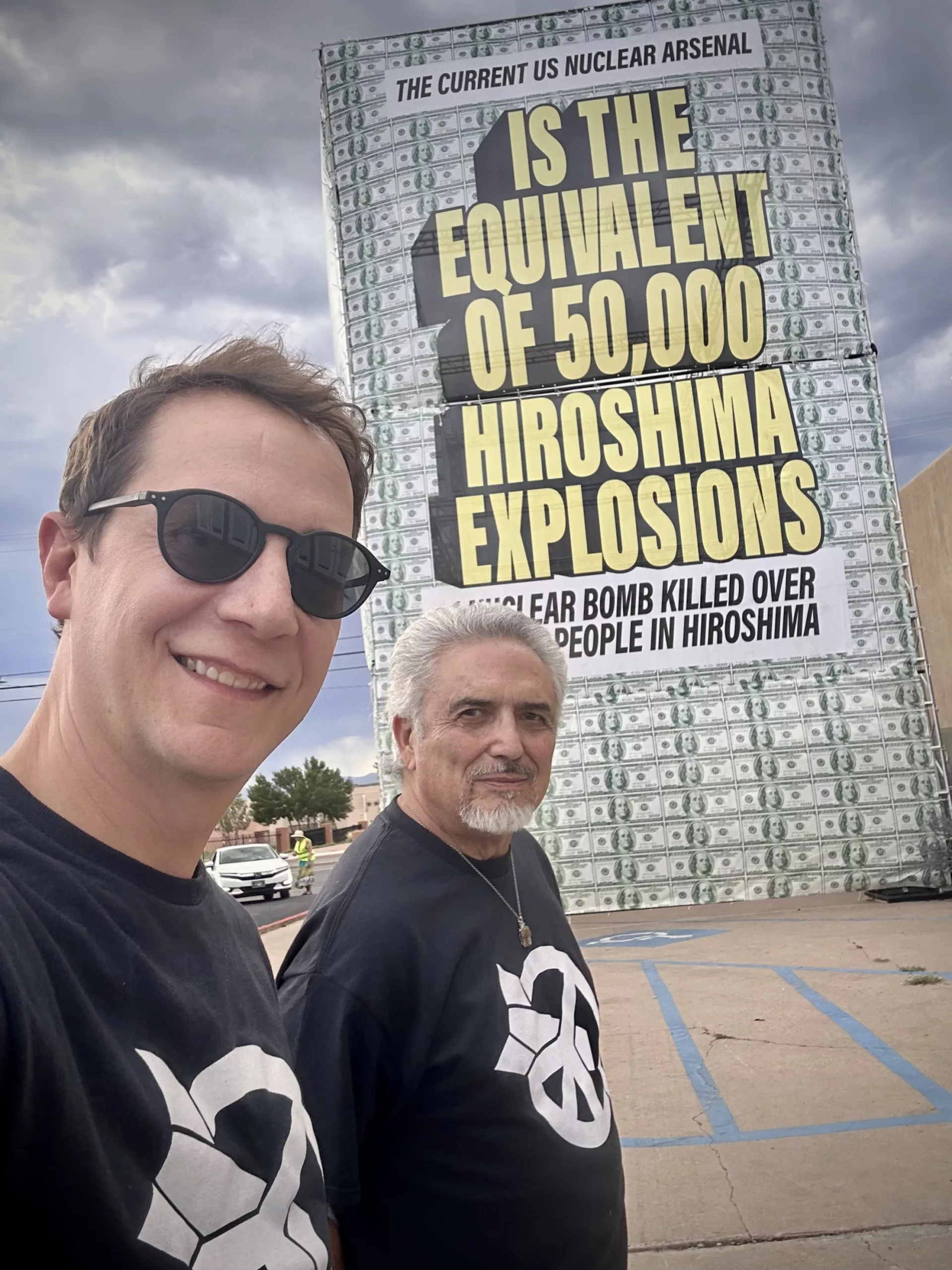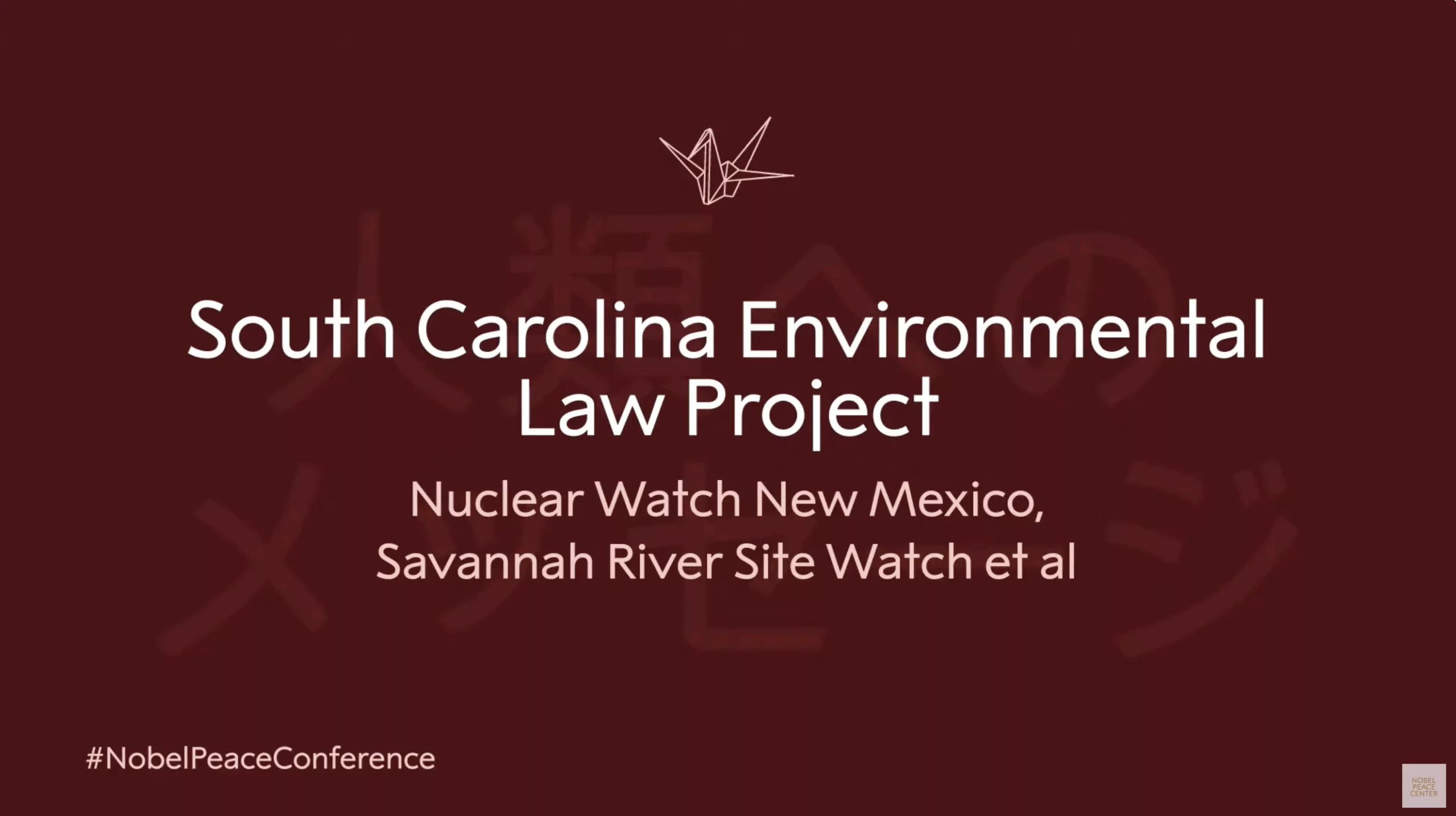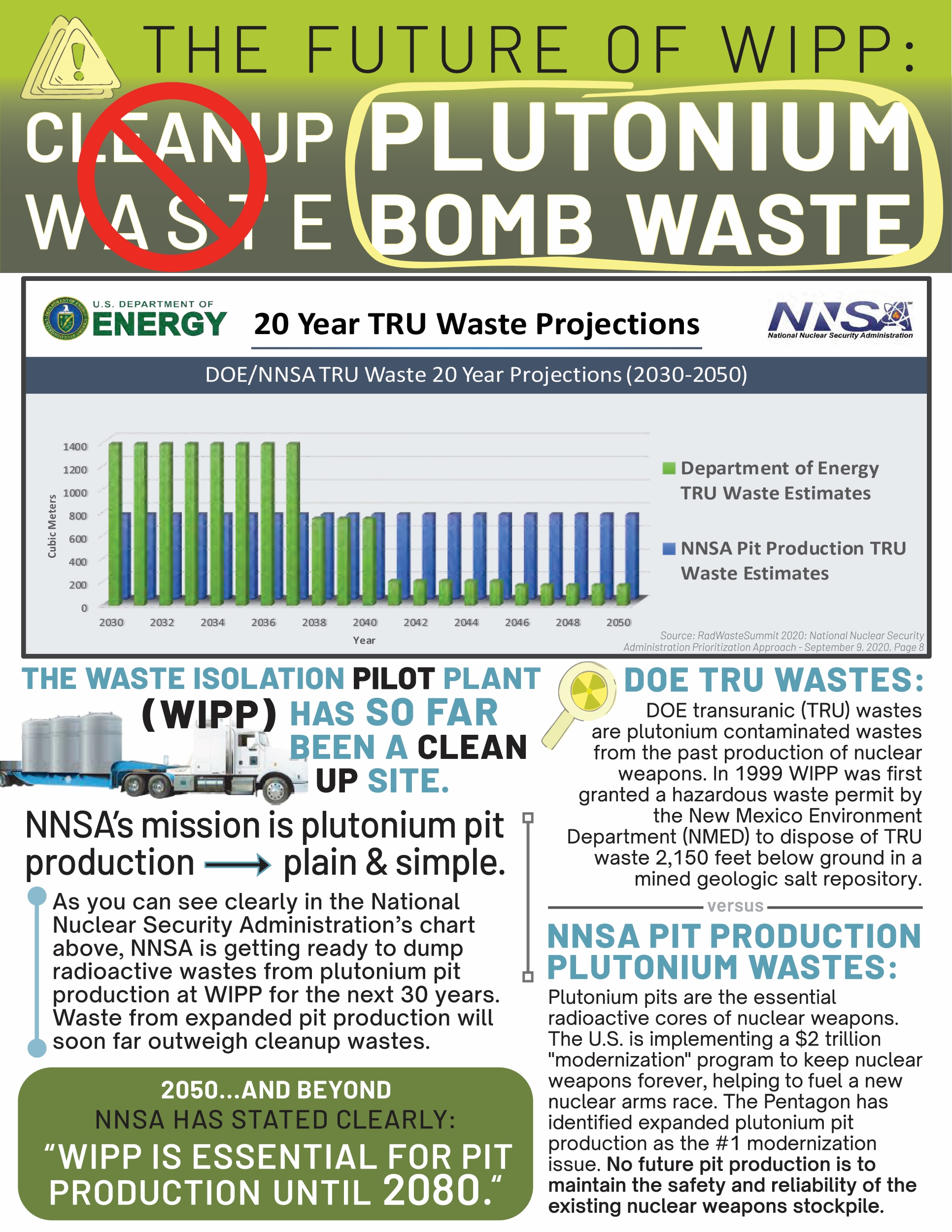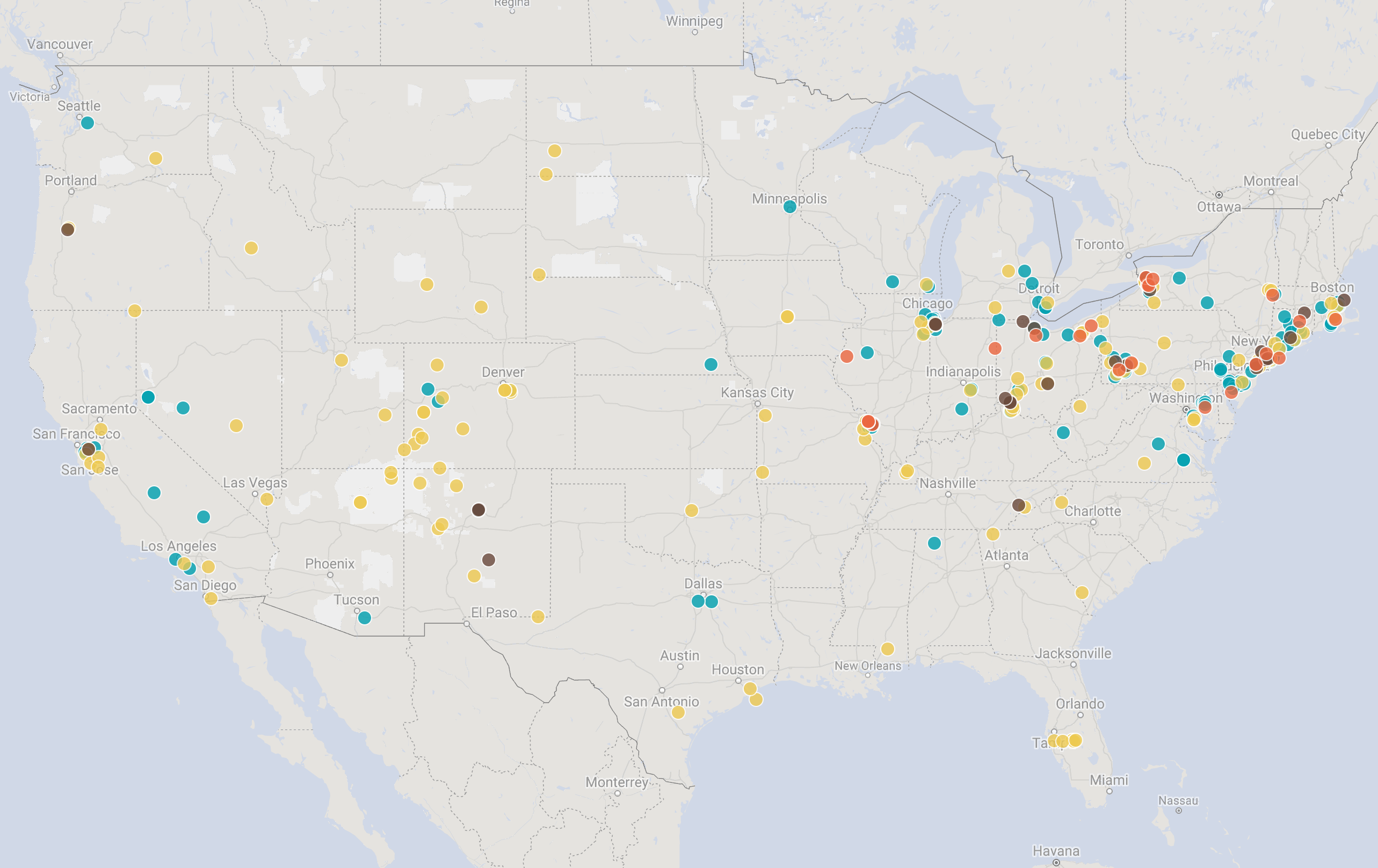QUOTE OF THE WEEK
Nothing Found
It seems we can’t find what you’re looking for. Perhaps searching can help.
LANL’s Central Mission: Los Alamos Lab officials have recently claimed that LANL has moved away from primarily nuclear weapons to “national security”, but what truly remains as the Labs central mission? Here’s the answer from one of its own documents:
LANL’s “Central Mission”- Presented at: RPI Nuclear Data 2011 Symposium for Criticality Safety and Reactor Applications (PDF) 4/27/11
Banner displaying “Nuclear Weapons Are Now Illegal” at the entrance in front of the Los Alamos National Lab to celebrate the Entry Into Force of the Nuclear Weapon Ban Treaty on January 22, 2021
Nothing Found
It seems we can’t find what you’re looking for. Perhaps searching can help.
Follow the Money!
Livermore FY26 Budget Request (Courtesy of Tri-Valley CAREs)
Map of “Nuclear New Mexico”
In 1985, US President Ronald Reagan and Russian President Mikhail Gorbachev declared that “a nuclear war cannot be won and must never be fought.”

NEW & UPDATED
DOE and LANL Silence Public and Tribal Community Member Voices While Pushing Radioactive Tritium Venting
For Immediate Release: August 22, 2025
Contact: Kalyn Mae Finnell, Coordinator, Communities for Clean Water
Los Alamos, NM — This week’s so-called “public meeting” regarding Los Alamos National Laboratory’s (LANL) proposal to vent radioactive tritium emphasized the persistence of the Department of Energy (DOE) National Nuclear Security Administration (NNSA) and LANL to disregard communities concerns while prioritizing nuclear weapons projects.
In-person attendees were allotted three minutes to make statements about their concerns. Over 100 online participants—including many Pueblo community members who could not attend the meeting in Los Alamos in-person due to health, distance, or work commitments—were surprised to find that they were not permitted to provide verbal comments and restricted to submitting only one emailed question. DOE/NNSA and LANL gave no prior notice of this change. “This is not meaningful participation. It is exclusion,” said Marissa Naranjo with Honor Our Pueblo Existence.
The stakes are at an all time high. Tritium — produced in the development of nuclear weapons as triated water — is a radioactive isotope of hydrogen that travels quickly through air, water, soil, and food. When exposed to the human body, it can cause cancer, genetic damage, cross the placental barrier, and cause health impacts across generations. DOE/NNSA insists venting is the sole safe option moving forward—however, their own “independent” technical review revealed significant issues with this assertion. The review acknowledged significant deficiencies: the absence of real-time monitoring, a lack of container-specific risk analysis, and insufficient examination of safer alternatives such as filtration or storage until decay occurs. Community members are also asking: How can a review be independent when DOE managed the process, designated the reviewer, and defined the scope? This does not represent independence—it signifies a conflict of interest.
“This is the same broken pattern we’ve seen for decades,” said Joni Arends with Concerned Citizens for Nuclear Safety. “LANL creates the danger, then tells us radioactive releases are our only option. They force the public and Pueblo communities into what NMED itself has called ‘untenable situations.'”
Local community leaders also noted that DOE has consistently overlooked reports by Tewa Women United, Communities for Clean Water, and scientific experts regarding the risks associated with tritium. These technical reports documented exposure pathways unique to Pueblo communities, including impacts on women, children, and traditional farming lifeways. By sidelining this research, DOE has once again dismissed Indigenous voices and lived experiences—further diminishing trust and perpetuating environmental racism.
“If our gathering here today is to mean anything, it must mean that in fidelity to all those whose lives were destroyed or savagely damaged on August 6, 80 years ago, we refuse to live in such a world of nuclear proliferation and risk-taking. We will resist, we will organize, we will pray, we will not cease, until the world’s nuclear arsenals have been destroyed.”
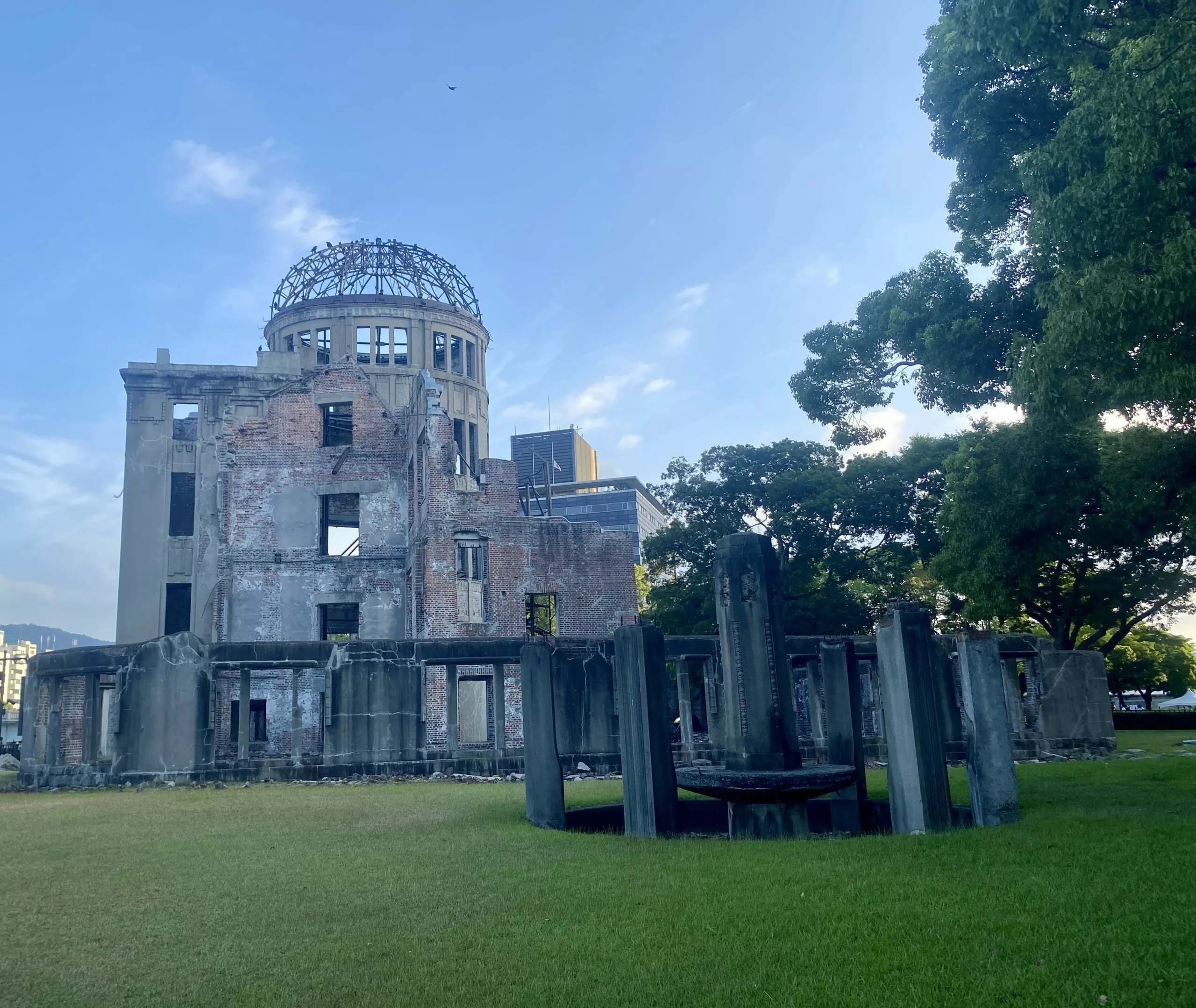 — Cardinal Bob McElroy of Washington, DC, August 5, 2025, at the World Peace Memorial Cathedral in Hiroshima, Japan.
— Cardinal Bob McElroy of Washington, DC, August 5, 2025, at the World Peace Memorial Cathedral in Hiroshima, Japan.
Nuclear Weapons Issues & The Accelerating Arms Race: August 2025
Nuclear Weapons Budget:
• NNSA’s detailed budget was finally released, the latest ever. $2.8 billion is for “plutonium modernization” (i.e., pit production) projects, of which $1.8 billion for LANL. The Lab’s nuclear weapons programs are having a full billion dollars added to them for FY 2026 (which begins this October 1) on top of the $4 billion they already have. The Lab’s $6 billion FY 2026 budget is now 84% nuclear weapons. Meanwhile cleanup and nonproliferation programs are being cut by 5% and renewable energy research completely eliminated.
• Over for the next four years the “reconciliation” bill adds another $750 million for plutonium modernization (mostly at SRS) and $1 billion “to accelerate the construction of National Nuclear Security Administration facilities.”Continue reading
August 6th U.S. Atomic Bombing of Hiroshima Commemoration in Santa Fe
Eighty Years Later, it is Beyond Time to Get Rid of Nuclear Weapons.
Last week on August 6, 2025, the 80th anniversary of the U.S. atomic bombing of Hiroshima, community members gathered at the Center for Progress and Justice on Cerrillos Road in Santa Fe to honor the solemn occasion and demand an end to the ongoing nuclear weapons harm and destruction that first began here in New Mexico.
The event was organized by Nuclear Watch New Mexico in collaboration with the Up in Arms campaign by Ben Cohen, co-founder of Ben & Jerry's, to reduce military and nuclear weapons spending, the International Campaign to Abolish Nuclear Weapons (winners of the 2017 Nobel Peace Prize), the Santa Fe Archdiocese, the Back from the Brink New Mexico Hub, and the Tularosa Basin Downwinders Consortium. It centered around a massive public art installation from Up in Arms of a towering cubic structure framed by messages on top of images of $100 bills. The structure is sized to literally hold $100 billion of those bills, respresenting what the U.S. spends every year on nuclear weapons (the total cost of nuclear weapons "modernization" is up to $2 trillion). Visible to thousands of drivers each day, the large installation pressures viewers to reckon with the scale of this cost and to imagine what else those resources could make possible. A prominent message on one of the four sides quotes the president in saying, "'We don't need to build brand new ones. We already have so many,' — Donald Trump" and below it, "His budget includes a down payment of $2 trillion of nuclear weapons." Another side reads, "The current U.S. nuclear arsenal is the equivalent of 50,00 Hiroshima explosions. One nuclear bomb killed over 100,000 people in Hiroshima."
The installation will remain on display for the foreseeable future, GO SEE IT NOW! 1420 Cerrillos Road, Santa Fe, NM 87505.
During the event, speakers Archbishop John C. Wester (by video from Japan), Tina Cordova of the Tularosa Basin Downwinders, Sophie Stroud from Nuclear Watch New Mexico, Anne Pierce-Jones from Back from the Brink, Ben Cohen representing Up in Arms, and Seth Shelden from ICAN all gave concrete steps and actions that concerned citizens can take to help promote a safer world. The speakers were presented by former Santa Fe County Commissioner Anna Hansen, who stated, “Disarmament is the only answer. I have spent my life working to end the nuclear cycle, as many have, and most of us in this room have never known a world without nuclear weapons.”
Speakers drew connections between the devastation in Hiroshima and the continued production of plutonium pits at LANL. At Los Alamos National Lab alone, five billion dollars will be poured into nuclear weapons programs in Fiscal Year 2026, starting this October. One billion dollars was added to last year’s budget, which includes a 42% increase for nuclear warheads. At the same time, nonproliferation programs are being cut, the science budget sliced in half, and funds for renewable energy zeroed out and gone completely. The push for "modernization" of the US’s nuclear arsenal is directly linked to plutonium pit production at Los Alamos, specifically expanding plutonium pit production. LANL will receive $1.7 billion in direct costs for pit production in 2026. Add in the indirect costs, and it’s roughly double that. All of this future pit production is exorbitantly expensive, yet the National Nuclear Security Administration still has no credible cost estimate for these plans.
WHAT YOU NEED TO KNOW: New plutonium pits are not needed to maintain the existing stockpile - it is all for future, new designs. And these new weapons cannot be tested because of the testing moratorium - or conversely could pressure the US to resume testing. In 2006, independent experts concluded that existing plutonium pits last at least a century. Their average age now is about 43 years. A new pit aging study is expected this year. Expansion plans should stop until then.
The U.S.’s $2 trillion “modernization” program is a plan to keep nuclear weapons forever. It is claimed to be essential for “deterrence.” But deterrence relies upon the flawed assumption that all actors will behave rationally, and that accidents or miscalculations will never occur. History says otherwise. Moreover, the U.S. and Russia have always rejected minimal deterrence in favor of nuclear warfighting capabilities that could end civilization overnight. That is why we have 1,000s of nuclear weapons and are funneling billions of dollars into mass death machines, even though everybody knows that a nuclear war must never be fought and can never be won.
See more on the myth of deterrance here:
Deterrence is the Threat: NukeWatch Presentation for Western New Mexico University – April 1, 2025
Media coverage of the event includes the Santa Fe New Mexican articles below:
New Mexico reckons with its role in Japan’s atomic devastation on 80th anniversary of Hiroshima
‘End the nuclear cycle’: Antinuclear New Mexicans speak out 80 years after Hiroshima bombing
View the full event recording - Click HERE or below:
Nobel Peace Conference: A Message to Humanity – Featuring a Video with Nuclear Watch New Mexico on Our Plutonium Pit Federal Lawsuit to Show What Citizen Action on the Legal Front Can Accomplish for Nuclear Disarmament
The video above shows the entire conference (but begins playing at our portion); to view our video alone on YouTube CLICK HERE or watch below!
Santa Fe New Mexican MY VIEW – 80 years on: The immorality of nuclear weapons
By John C. Wester, SANTA FE NEW MEXICAN | August 5, 2024 santafenewmexican.com
Greetings New Mexicans. The lord’s blessings upon you. I am writing to you from Hiroshima, Japan, on the 80th anniversary of its horrific atomic bombing. All wars are against Christ’s teachings. Two wrongs (including Japanese atrocities in World War II) never make a right.
I am here with Cardinal Blase Cupich of Chicago, Cardinal Robert McElroy of Washington, D.C., Archbishop Paul Etienne of Seattle and our brother Japanese bishops to commemorate the dead and to honor the living Hibakusha (the aging atomic survivors). We especially congratulate the Hibakusha organization, Nihon Hidankyo, for winning the 2024 Nobel Peace Prize.Continue reading
‘End the nuclear cycle’: Antinuclear New Mexicans speak out 80 years after Hiroshima bombing
Organized by Nuclear Watch New Mexico, the event featured speakers from the international campaign — which won the Nobel Peace Prize in 2017 — the Back from the Brink New Mexico Hub and the Tularosa Basin Downwinders Consortium, a group that advocates for “downwinders” in New Mexico who say they were sickened by fallout from the 1945 Trinity Test southeast of Socorro.
By Cormac Dodd cdodd@sfnewmexican.com, The Santa Fe New Mexican | August 6, 2025 santafenewmexican.com
The face of Archbishop John C. Wester played over the screen as the Catholic leader, on the same day surreal moments of horror unfolded during the bombing of Hiroshima 80 years ago, pleaded for nuclear disarmament.
“Do we pull back from the brink and choose life, or do we continue to play with fire, hoping our luck will hold out?” the leader of the Archdiocese of Santa Fe said in a video, recently recorded before he traveled to Japan with a delegation of U.S. bishops.
Wester has made antinuclear advocacy a central part of his tenure since he was appointed to the post in 2015. A group of about 50 people entered the Center for Progress and Justice on Cerrillos Road on Wednesday evening to commemorate the nuclear bombing of Hiroshima and Nagasaki toward the end of World War II.
New Mexico reckons with its role in Japan’s atomic devastation on 80th anniversary of Hiroshima
At a Wednesday evening event organized by Nuclear Watch New Mexico, Archbishop John C. Wester of the Archdiocese of Santa Fe, long an outspoken advocate of nuclear disarmament, is set to celebrate Mass in Japan for victims with some other U.S. Catholic bishops and will participate in commemoration services. The event will be played by video at an event in Santa Fe.
By Cormac Dodd cdodd@sfnewmexican.com, The Santa Fe New Mexican | August 5, 2025 santafenewmexican.com
Wesley Burris remembers waking to a morning of potent, white light and panic as the planet’s first atomic bomb went off in a test in the Jornada del Muerto desert near his family’s Southern New Mexico home in July 1945.
He does not recall, however, hearing the news from Hiroshima and Nagasaki in Japan over the radio just weeks later. In fact, because the U.S. government did not tell his family what it was they saw that July, it was years before Burris realized how the Trinity Test he witnessed as a child served as a prelude to the world-altering bombings of Japan on Aug. 6 and Aug. 9, 1945.
Eighty years ago, the U.S. dropped a nuclear bomb on Hiroshima near the end of World War II, unleashing immediate death on a sweeping scale and rendering vast corridors in the southwestern Japanese city charred and fragmented, with buildings reduced to rubble with harrowing speed.
LANL Expands Nuclear Bomb Production, Rejects Cleanup, Still Plans to Release Tritium
FOR IMMEDIATE RELEASE, August 3, 2025
Contact: Scott Kovac – 505.316.4148 | Email
Santa Fe, NM – Eighty years after the first radioactive waste was buried at the Los Alamos National Laboratory (LANL), Lab officials have released plans to “defer” cleanup of one of the older radioactive dumps. Material Disposal Area C (“Area C”) is an 11.8-acre site that was active from 1948 to 1974. It contains metals, hazardous constituents, and radioactively and chemically contaminated materials in six unlined disposal pits and 108 shafts. The total waste and fill in the pits and shafts are estimated at 198,104 cubic meters. Area C also has a serious gas plume of industrial solvents. Given the amount of long-lived plutonium wastes that are likely to be in Area C, leaving it buried 25 feet deep in a landfill rated for only 1,000 years is not acceptable.
On June 18, 2025, the Department of Energy (DOE) sent the New Mexico Environment Department (NMED) a letter outlining its plans to “defer corrective action” (i.e. cleanup) at Area C. It stated that the dump “is associated with active Facility operations and will be deferred from further corrective action under [NMED’s] Consent Order [governing cleanup] until MDA C is no longer associated with active Facility operations.”
Time Zero: 05: The Lab (Part 01)
https://964f6bfd-c857-4667-8d59-615efbd0d7c4.libsyn.com/05-the-lab-part-01
”
When the Manhattan Project arrived on the Pajarito Plateau in northern New Mexico, the land was not uninhabited. To establish the highly secretive Site Y, the United States military forcibly removed generations of Nuevomexicano ranchers and blocked regional Indigenous groups from accessing sacred sites. Almost immediately, the lab began detonating massive amounts of explosives, scarring the landscape. Military personnel regularly dumped nuclear waste into local canyon systems that ultimately flowed into the Rio Grande. When World War II came to a close, though, the lab did not.
More than eight decades later, an apocalyptic weapons factory—Los Alamos National Laboratory—still looms over the Pueblos and villages north of Santa Fe. Ninety miles south, Sandia National Laboratory and Kirtland Air Force Base store thousands of nuclear warheads beneath the city of Albuquerque. Both laboratories are expanding in scope and scale.
This week, you’ll hear from Dr. Alicia Romero, curator at the Albuquerque Museum and part of the steering commitee of the Tularosa Basin Downwinders Consortium; Yvonne Montoya, a Nuevomexicana dancer and choreographer; Dr. Myrriah Gómez, a scholar documenting nuclear colonialism in New Mexico; Joni Arends, co-founder and executive director of Concerned Citizens for Nuclear Safety; Archbishop John C Wester, of the Archiocese of Santa Fe; and members of Veterans for Peace.
Learn more, make a donation, or find a text-based version of today’s program at: timezeropod.com.
For a deep dive into the impacts of nuclear colonialism across the state of New Mexico, check out (and bookmark) Nuclear Watch New Mexico.
And visit the website of Tewa Women United to learn more about intersectional justice projects that center northern New Mexico communties.”
Santa Fe Archbishop Wester on RECA, Nuclear Weapons
80 years after nuclear bomb tested in N.M., victims will get reparations
NBC News NOW, July 16, 2025, nbcnewsnow.com
Trinity “downwinders” of New Mexico exposed to the first ever nuclear explosion are receiving recognition and compensation 80 years after the bomb was tested. NBC News’ Aaron Gilchrest spoke with several people who shared their sacrifice and suffering over the years.
Nothing Found
It seems we can’t find what you’re looking for. Perhaps searching can help.
Nothing Found
It seems we can’t find what you’re looking for. Perhaps searching can help.
Waste Lands: America’s Forgotten Nuclear Legacy
The Wall St. Journal has compiled a searchable database of contaminated sites across the US. (view)
Related WSJ report: https://www.wsj.com
New Nuclear Media: Art, Films, Books & More
Tactical Nukes: One Little Nuclear Weapon Can Ruin Your Whole Day
Some people believe smaller nuclear weapons can be used to fight battles. But nuclear weapons are nuclear weapons, and contemplating their use on the battlefield opens the door for full-scale nuclear war.
BBC REEL | Broken Arrows: The accidents that could end the world
On January 23rd, just three days after John. F. Kennedy delivered his inaugural speech as the 35th President of the United States, one little known event could have changed American history in the most catastrophic way imaginable.
A refuelling accident caused a B-52 bomber to break apart above a farm in Goldsboro, North Carolina, causing two 3.8 megaton nuclear bombs to plummet to the ground. Bar one small safety switch and a huge amount of luck, millions could have been killed. Accidents like this are known as ‘Broken Arrows’ and they have happened more than many people realise.
Video by Michal Bialozej
Narration by Dan John
Nothing Found
It seems we can’t find what you’re looking for. Perhaps searching can help.



